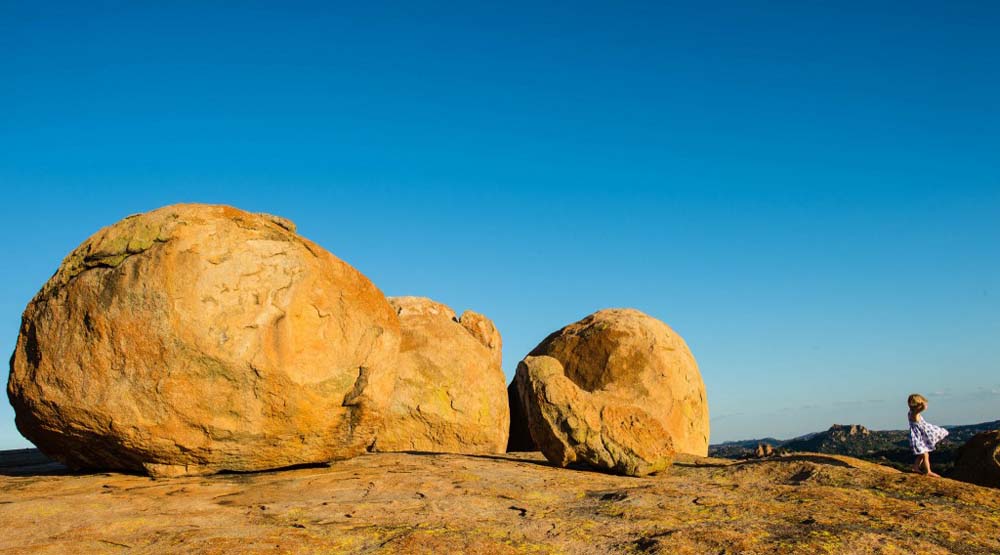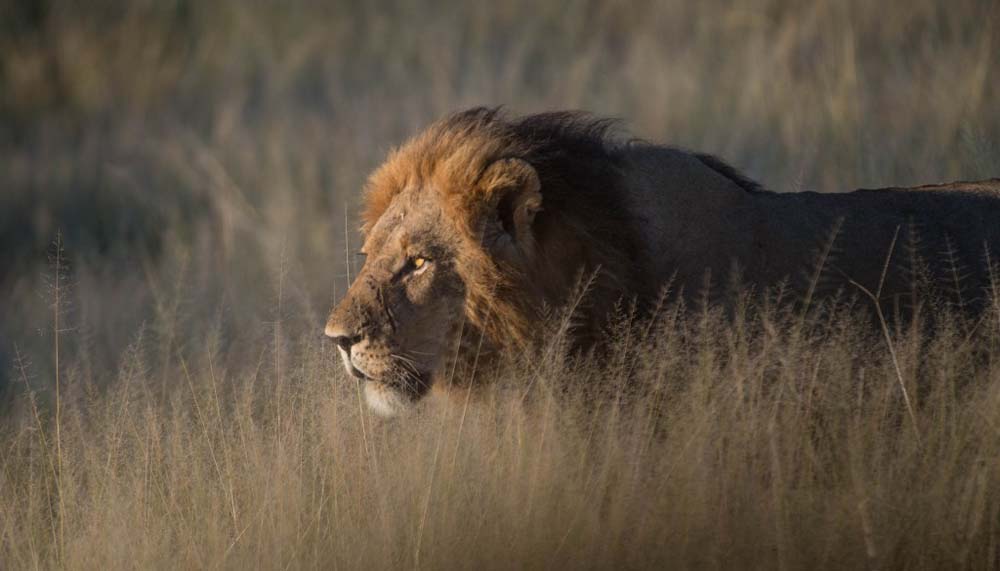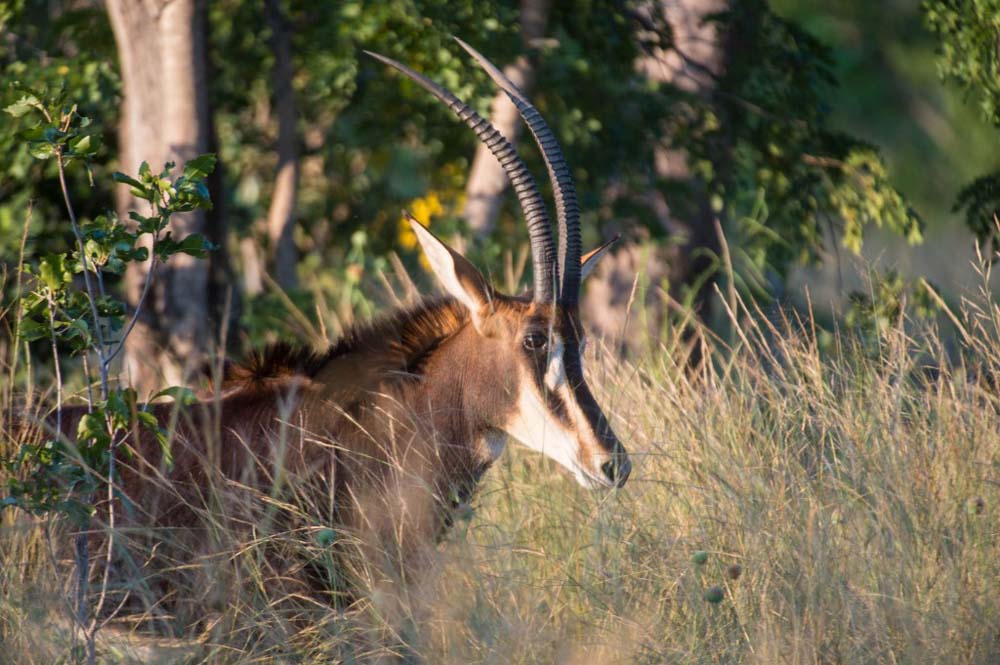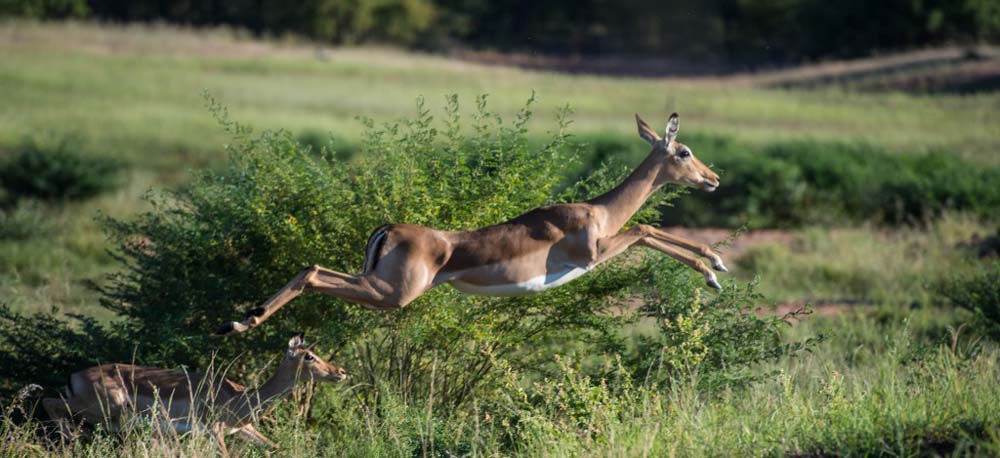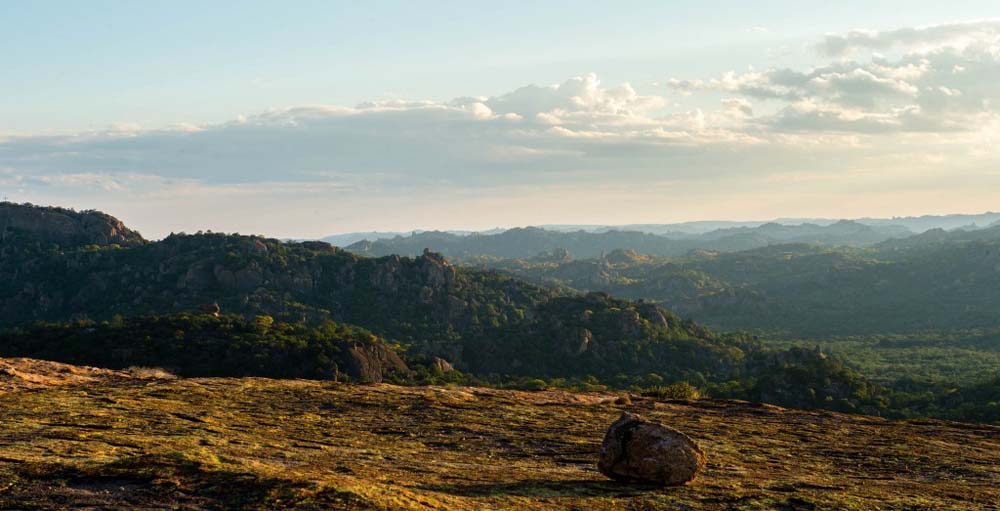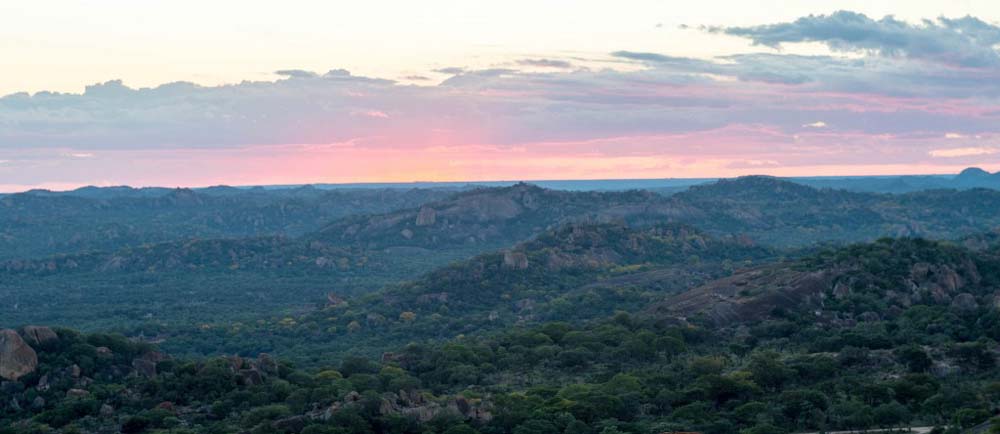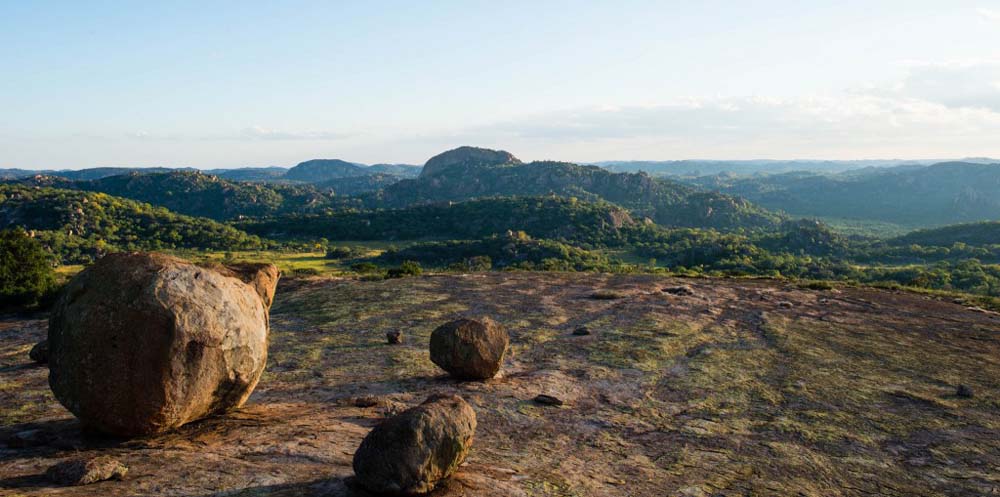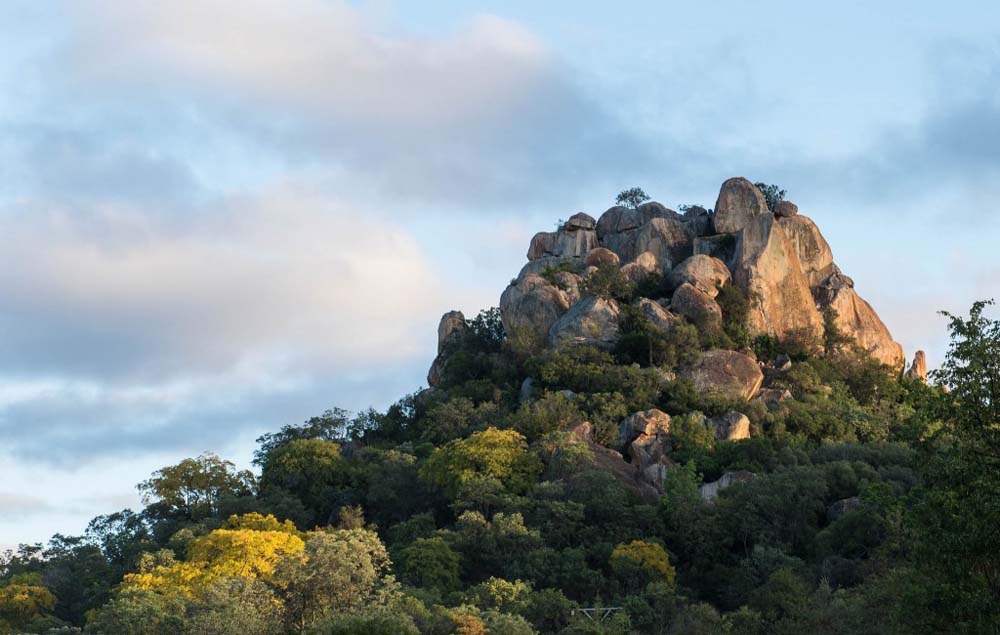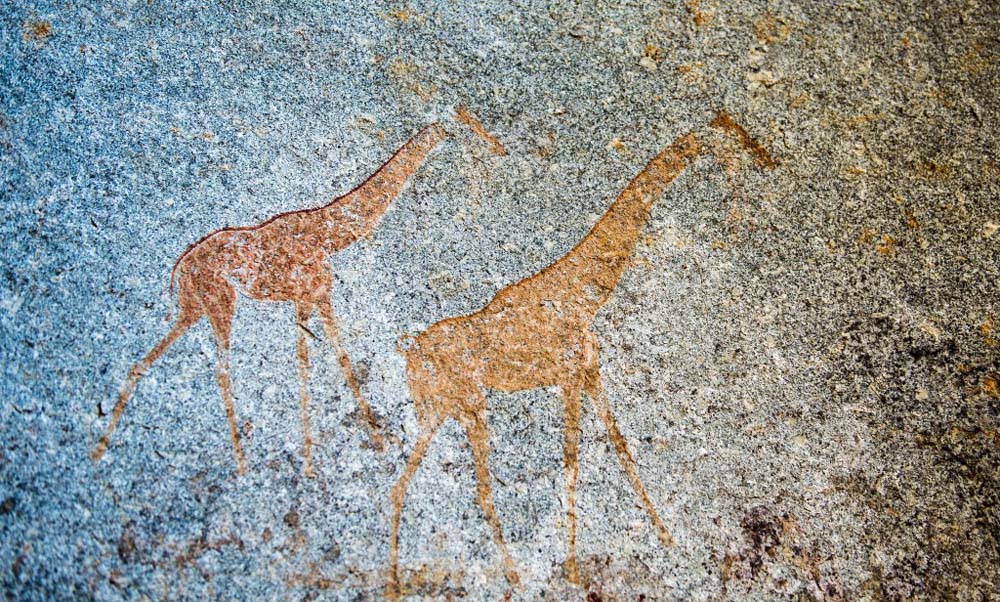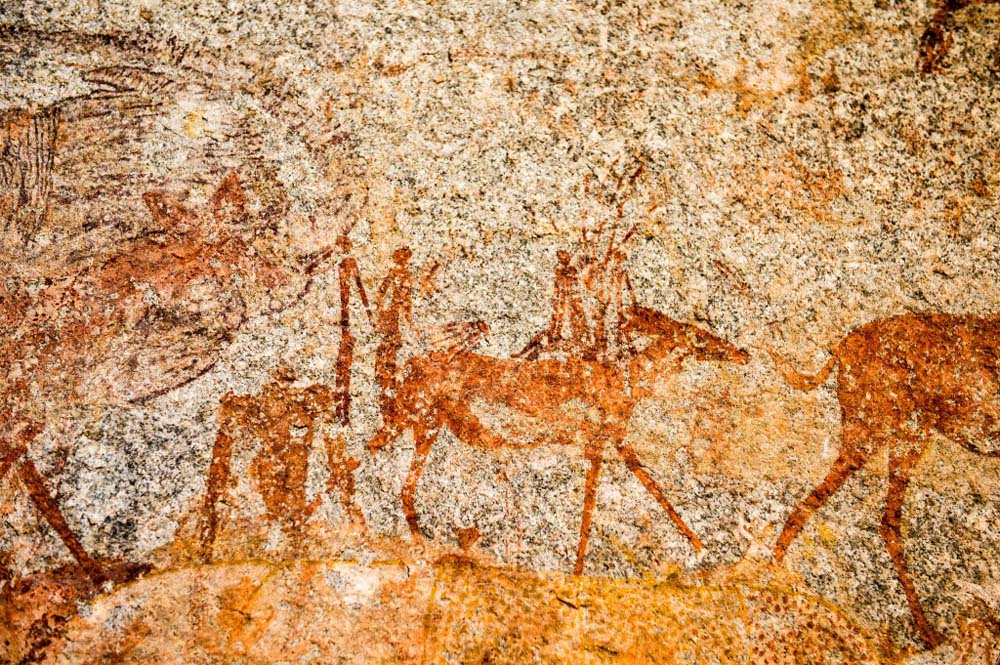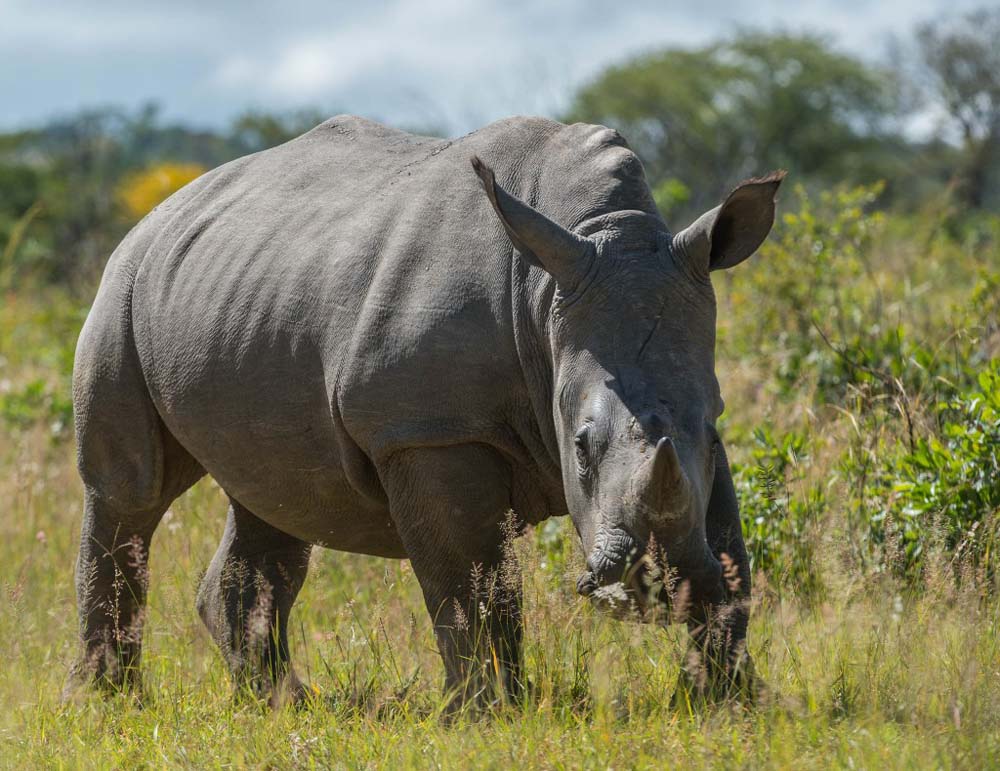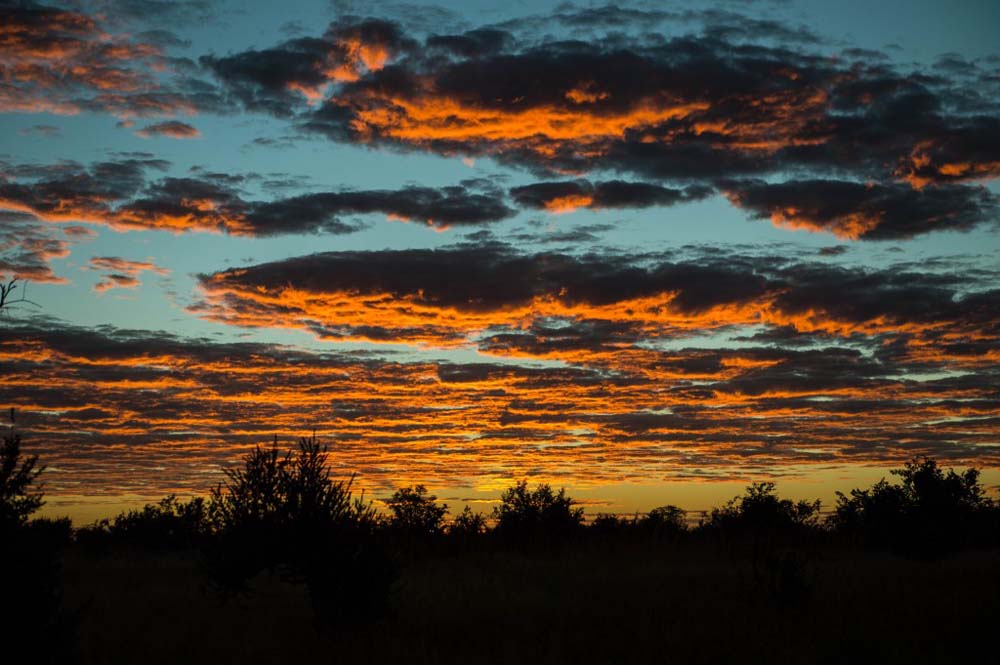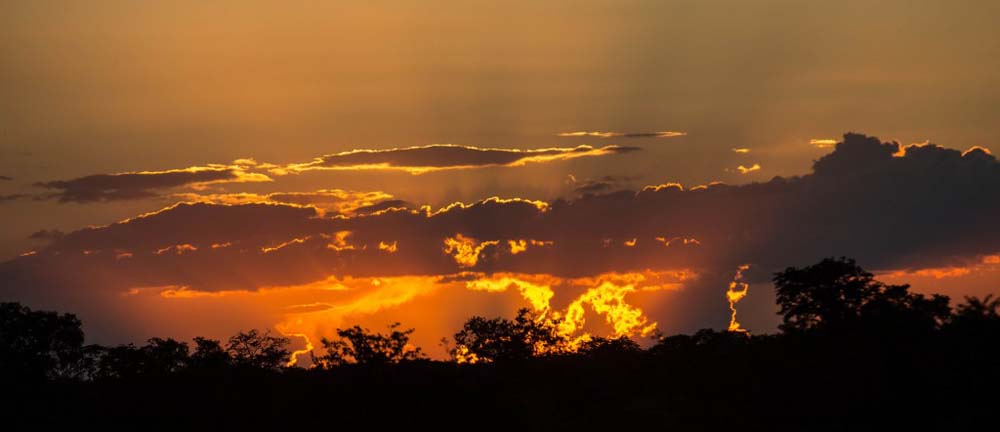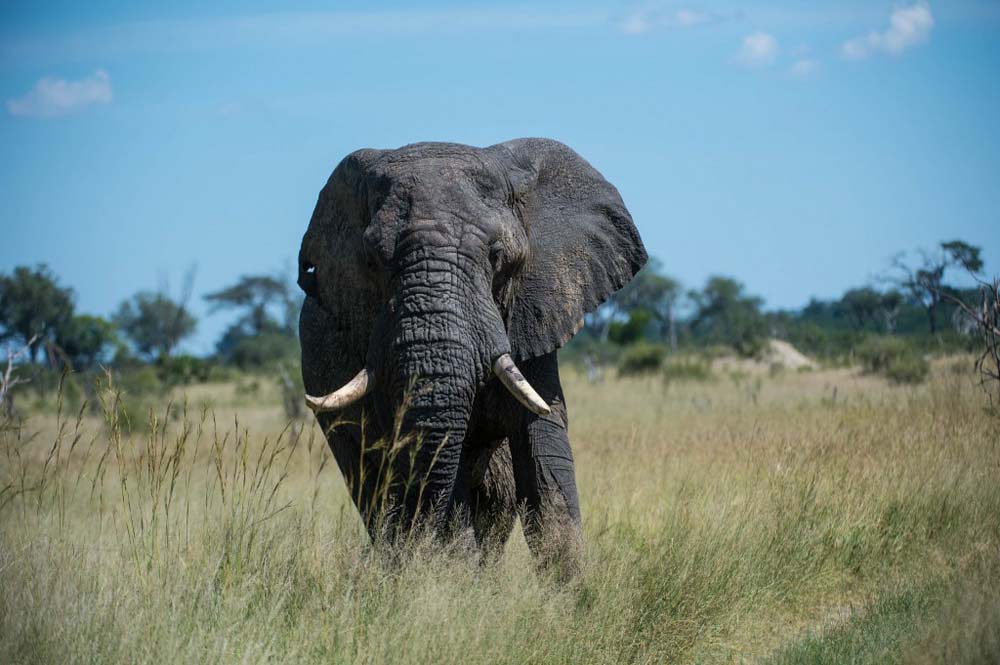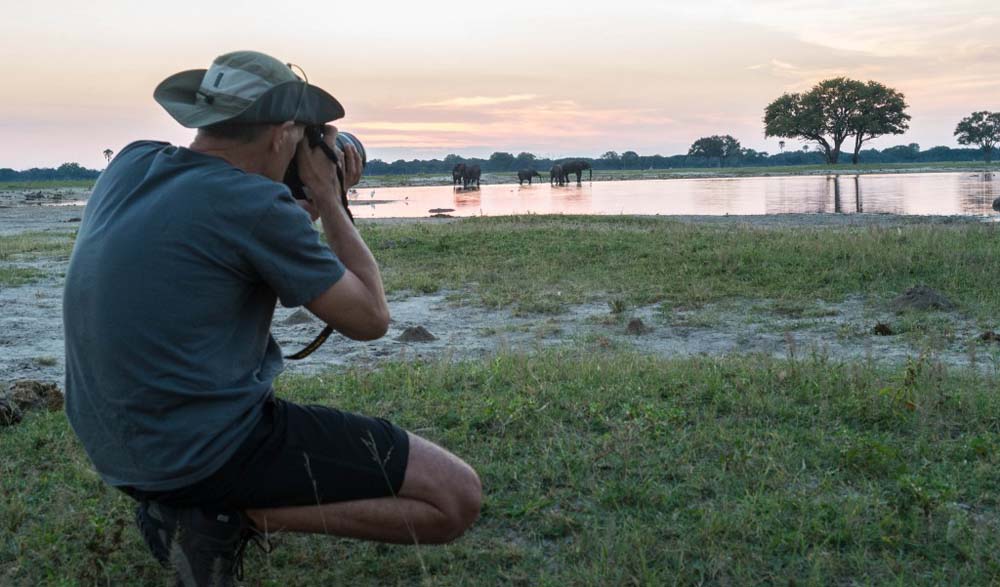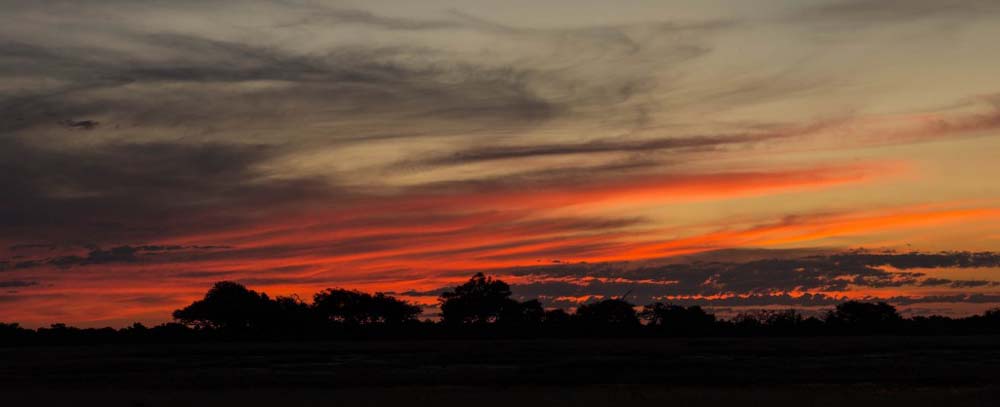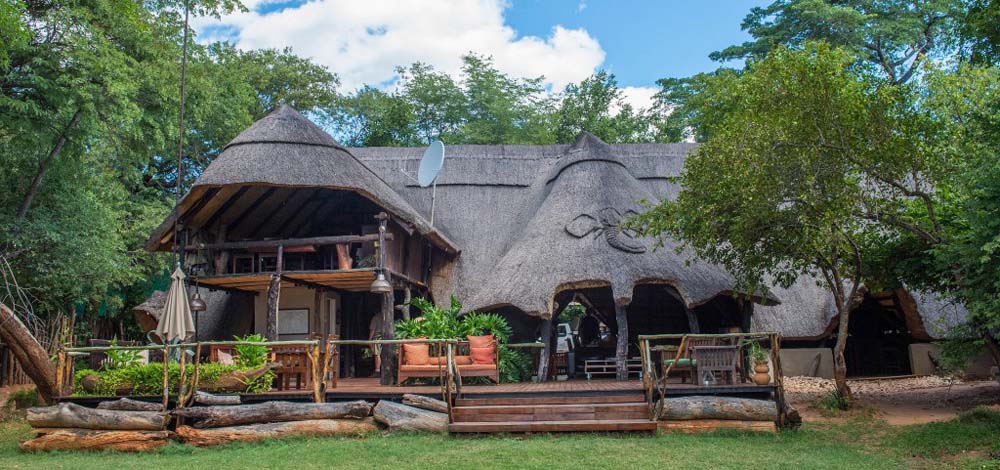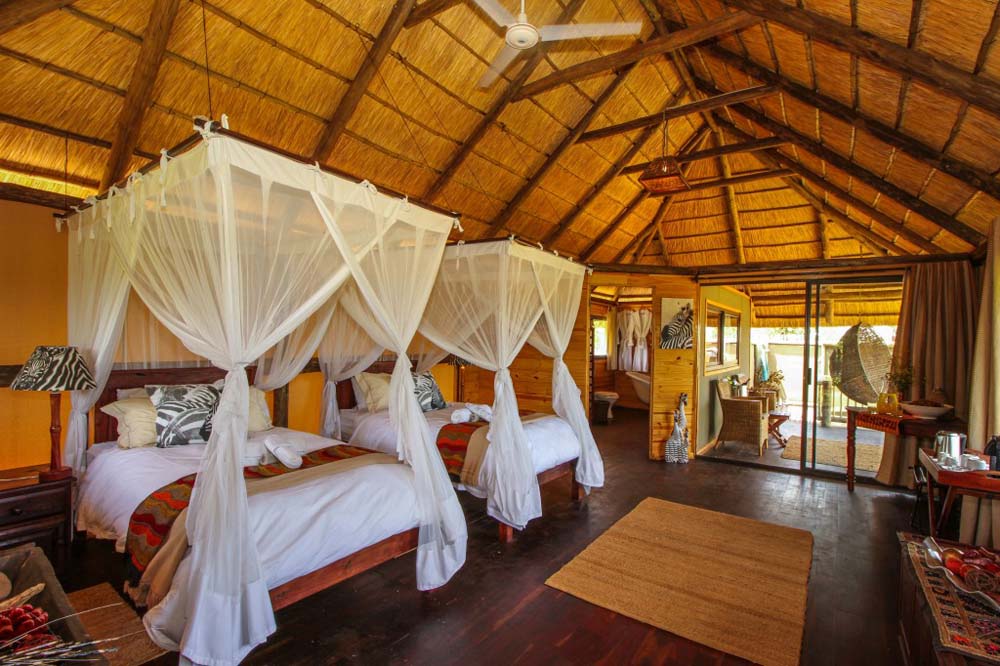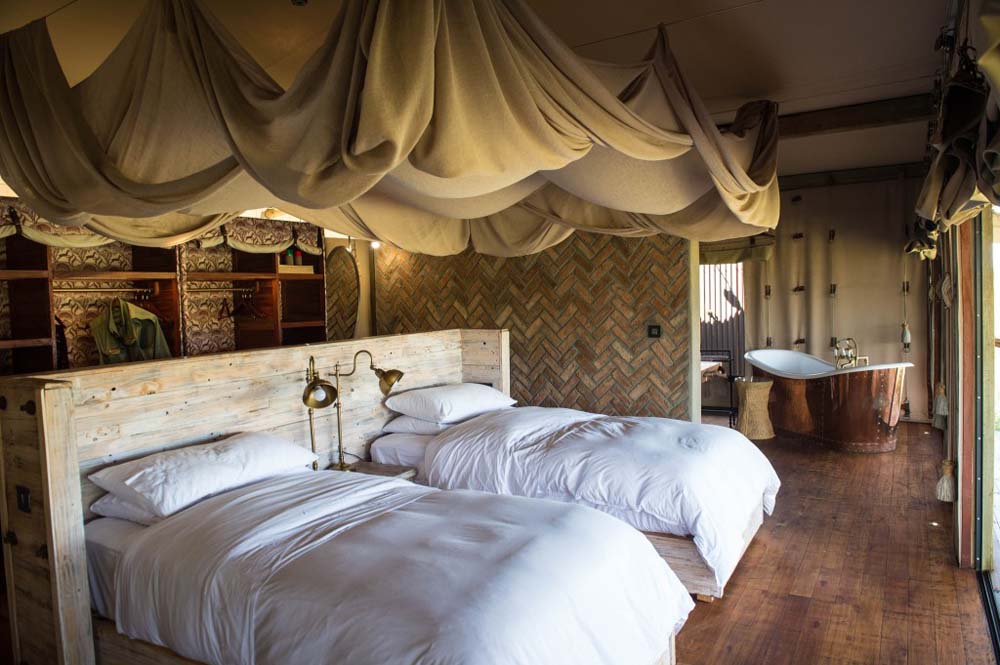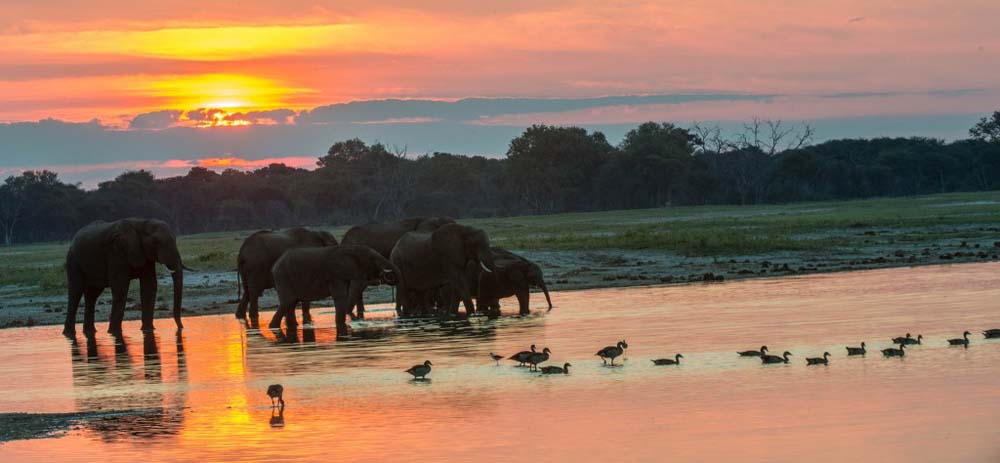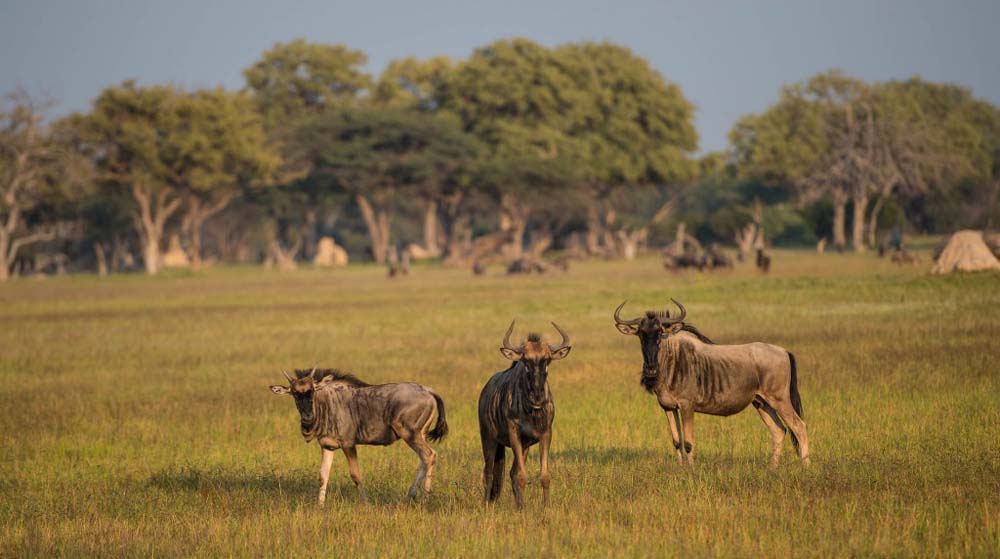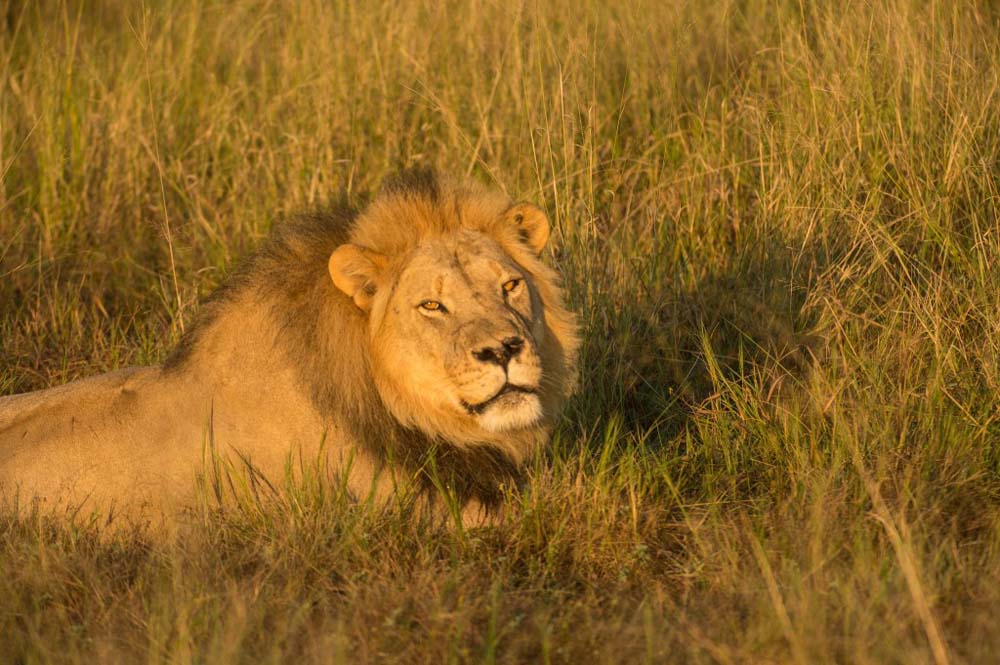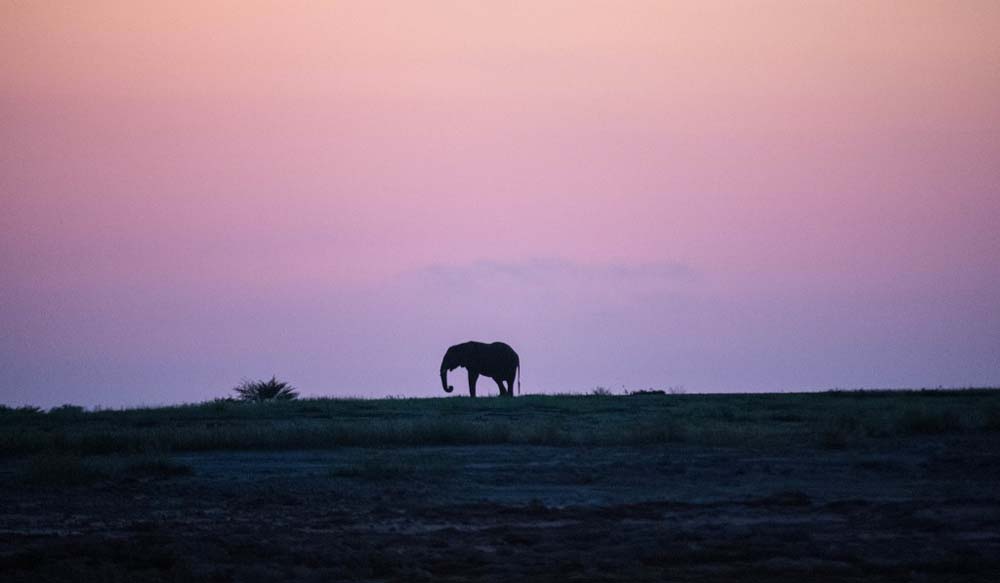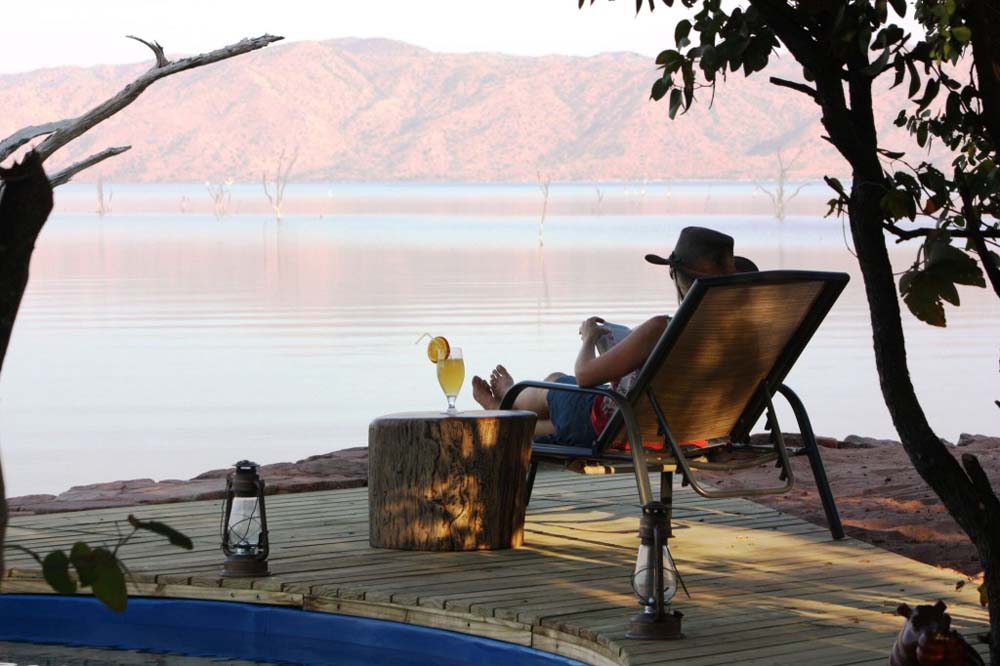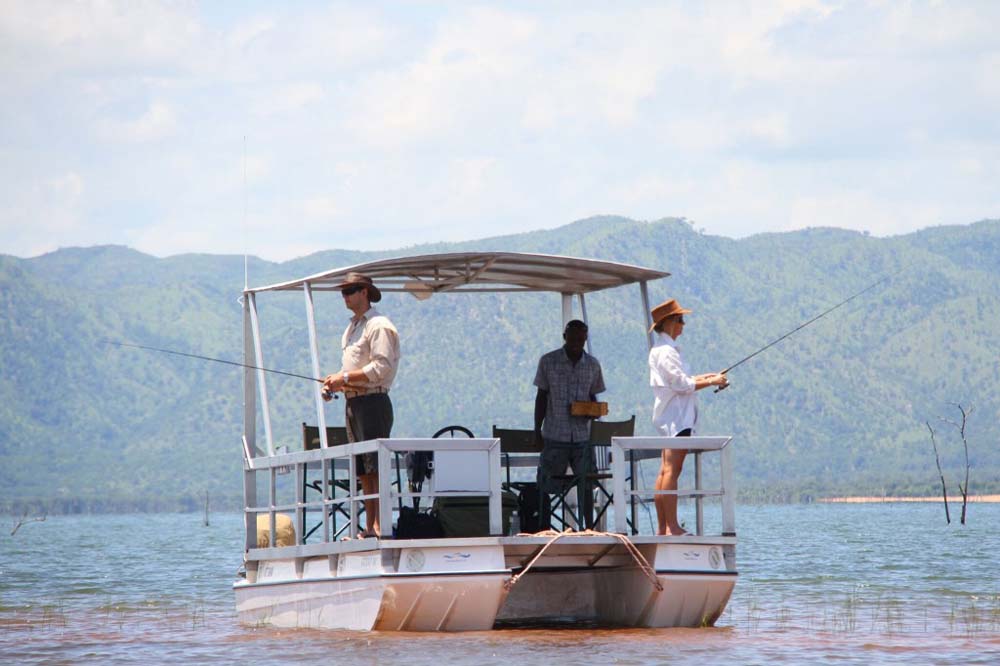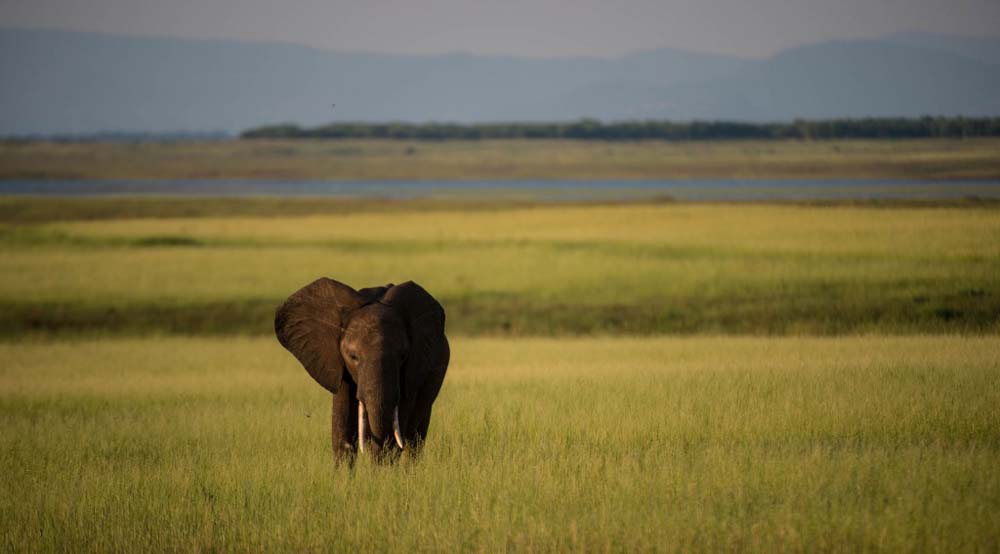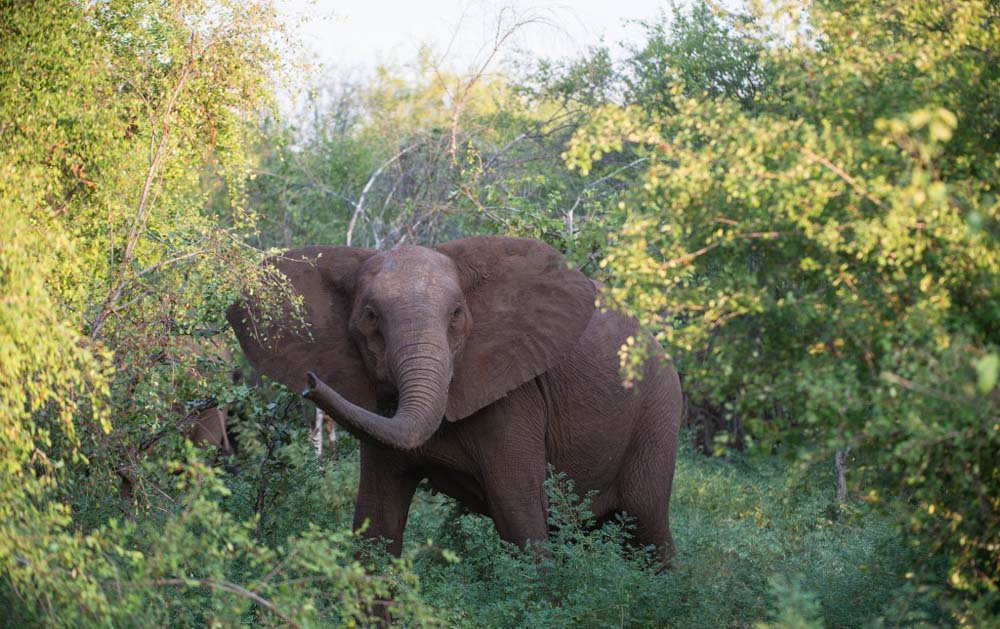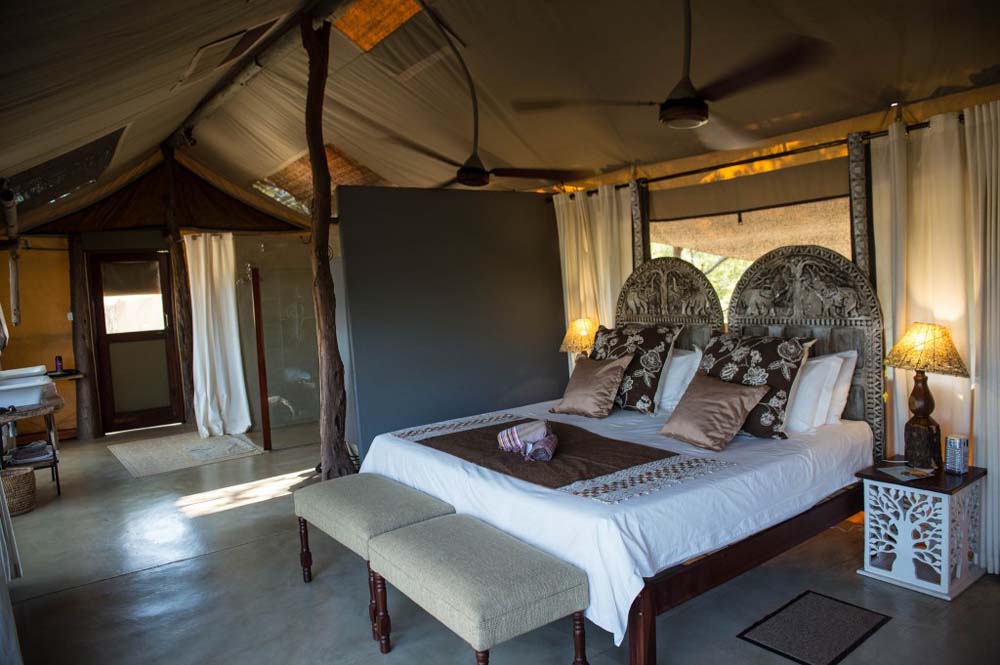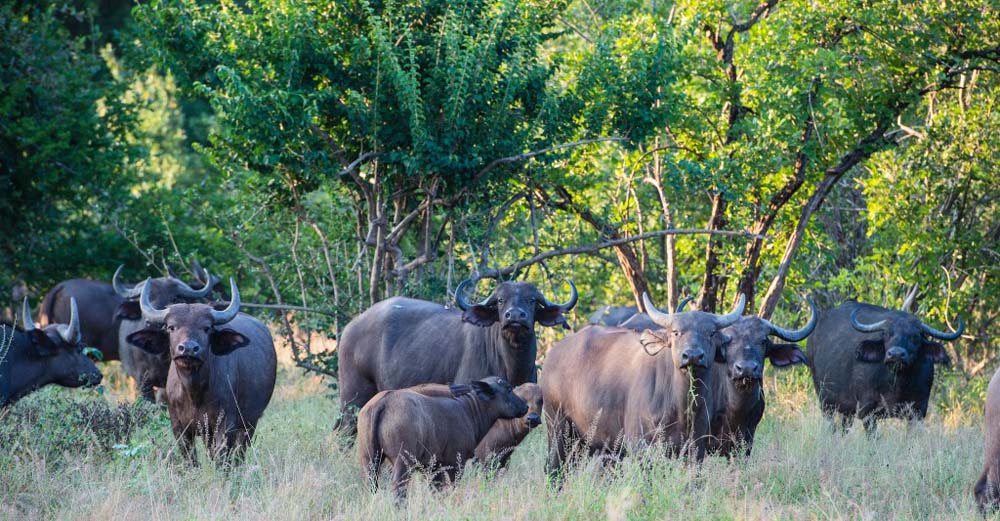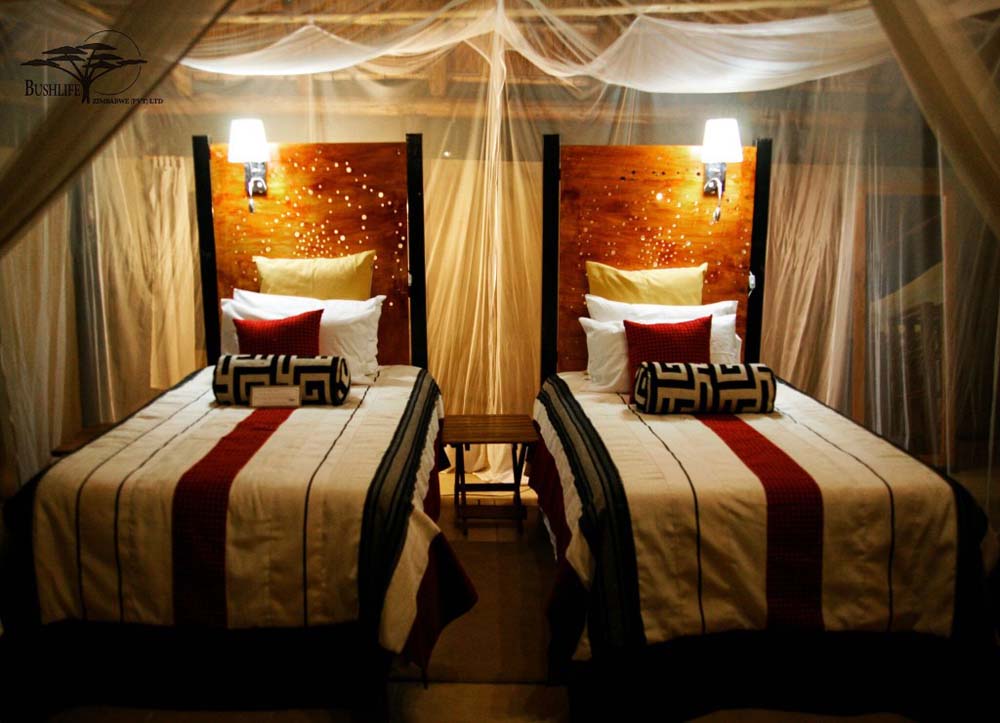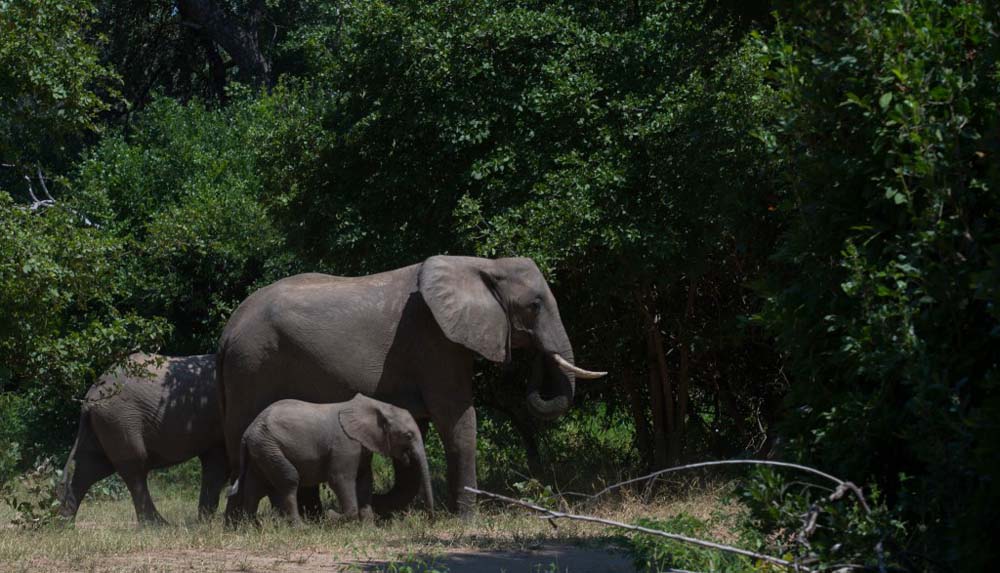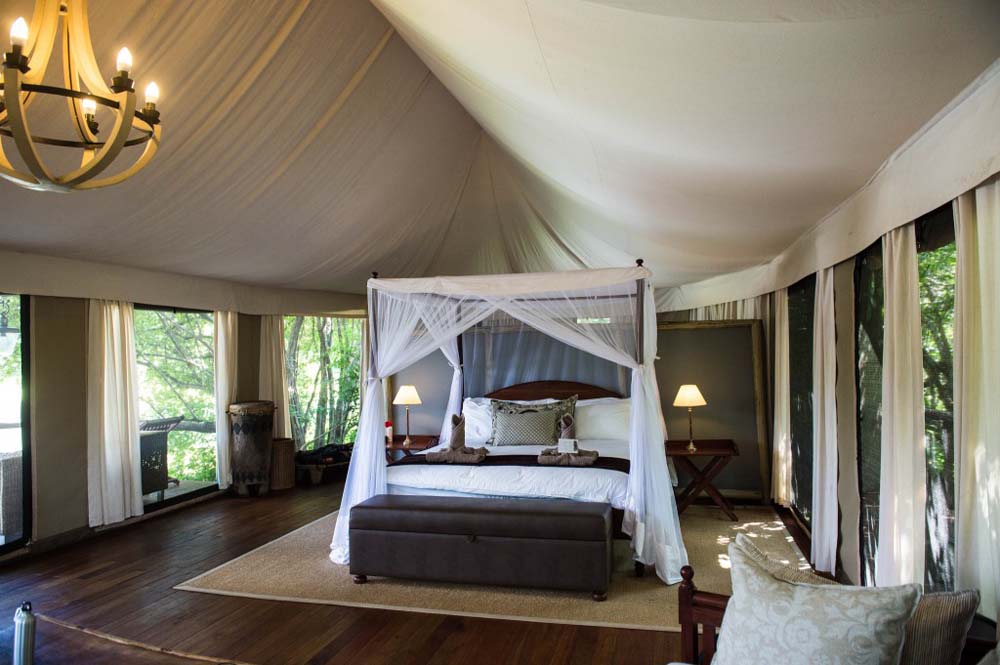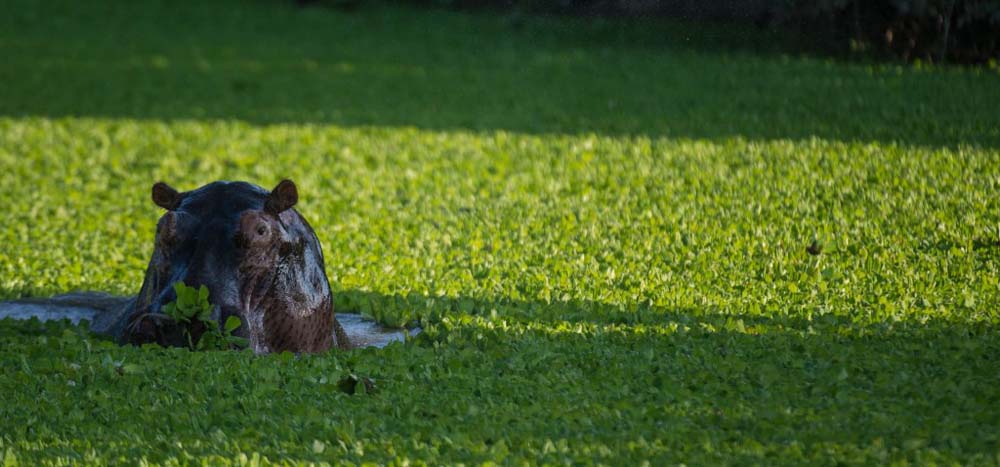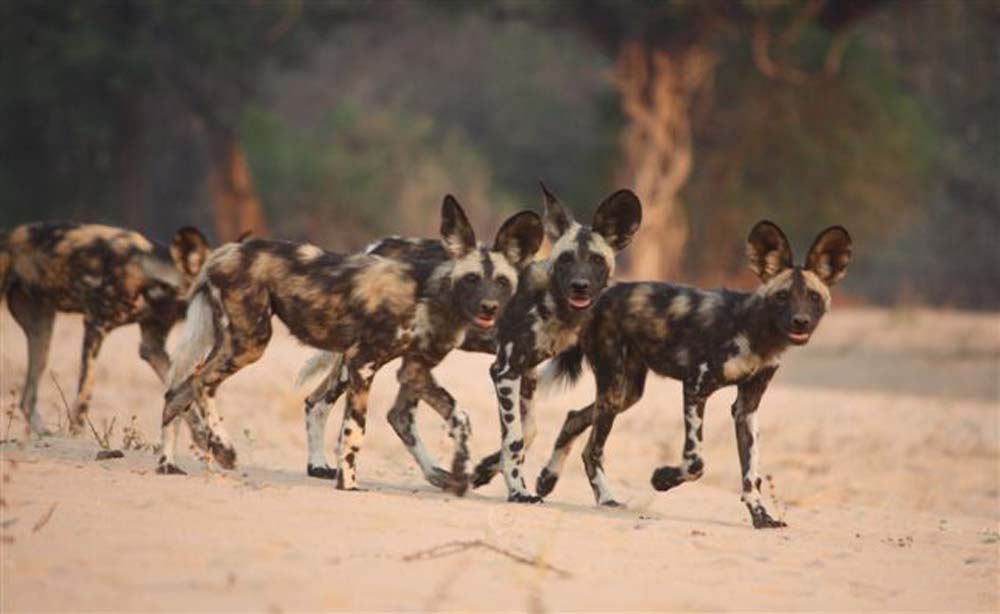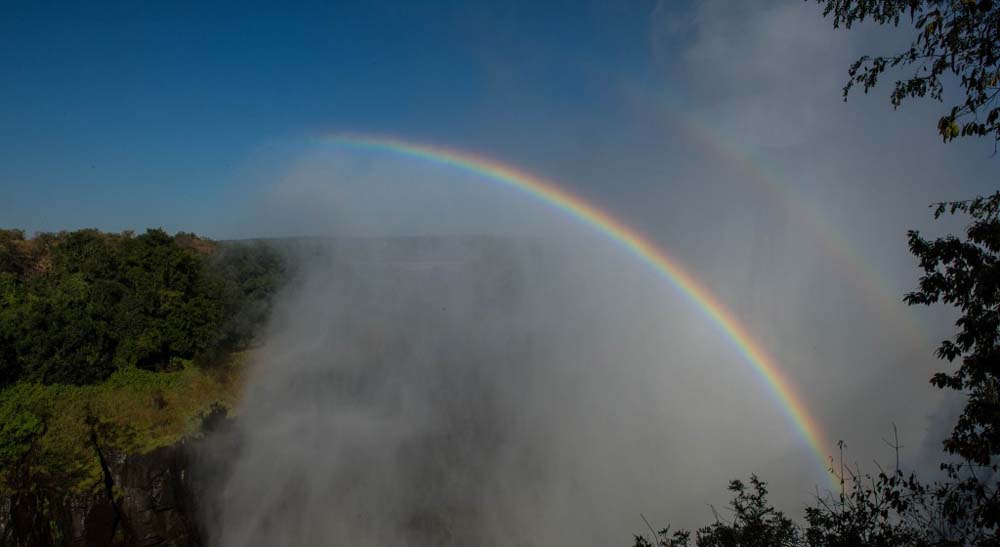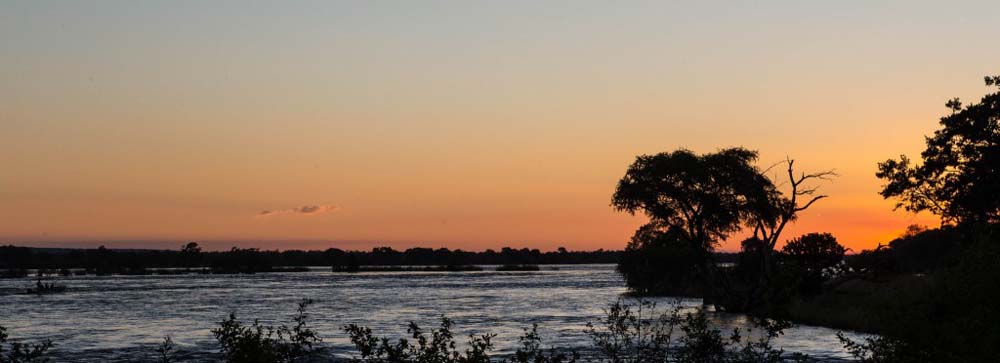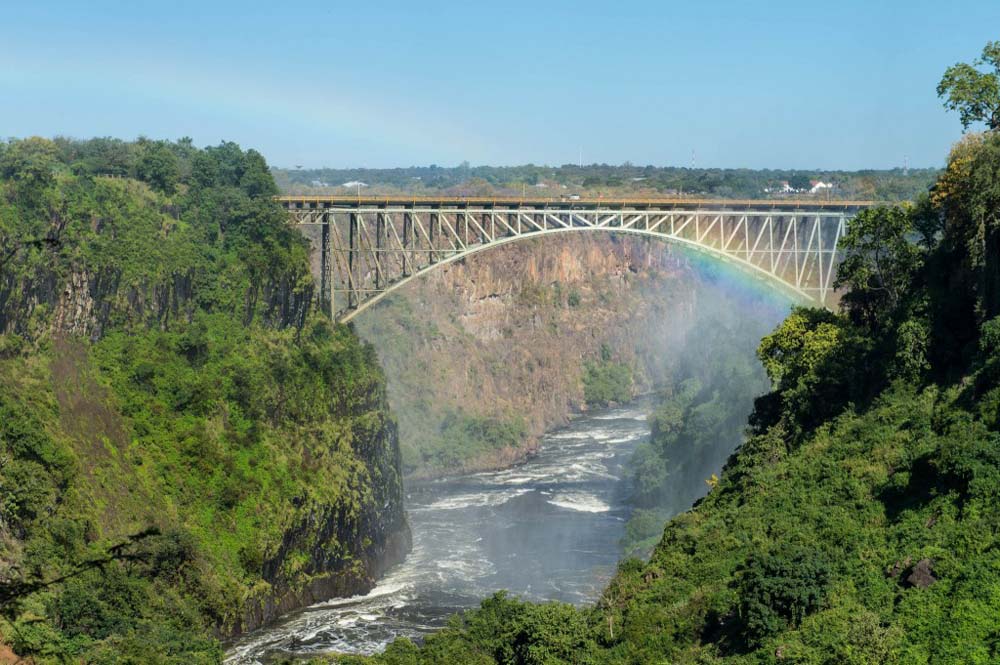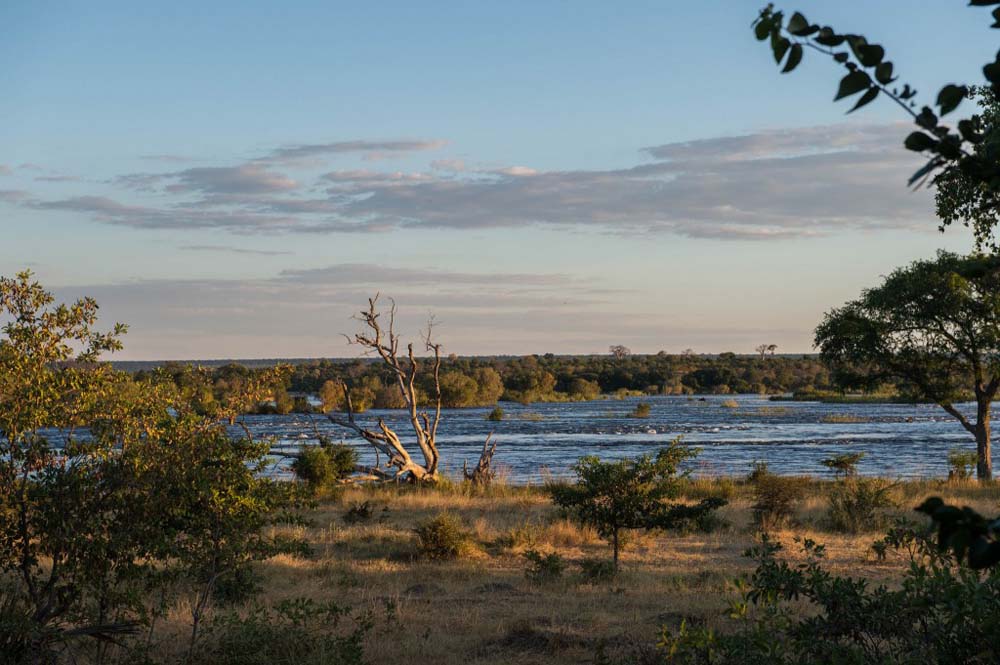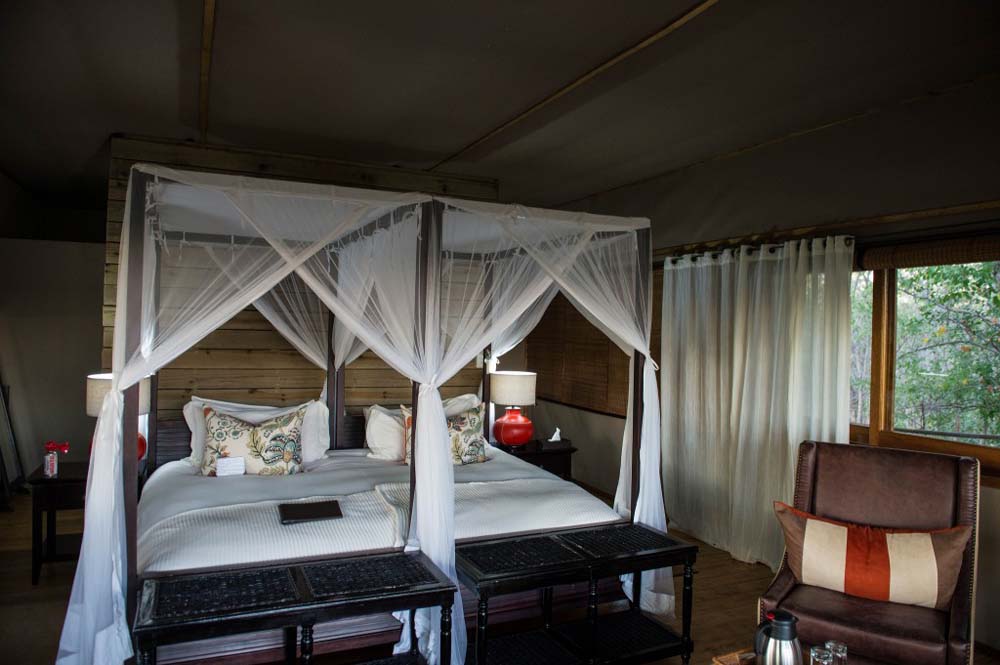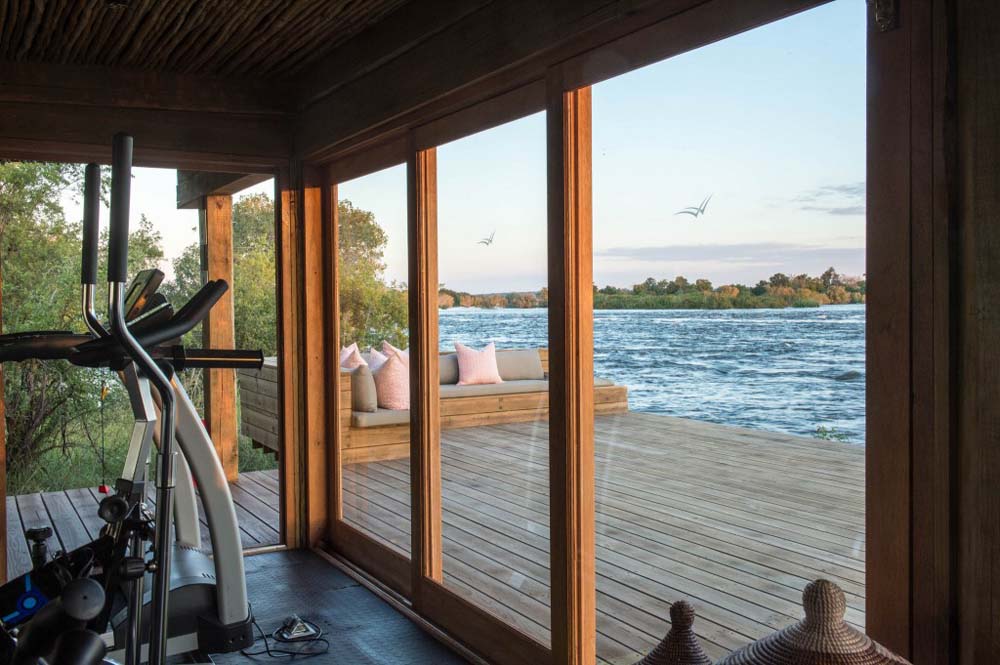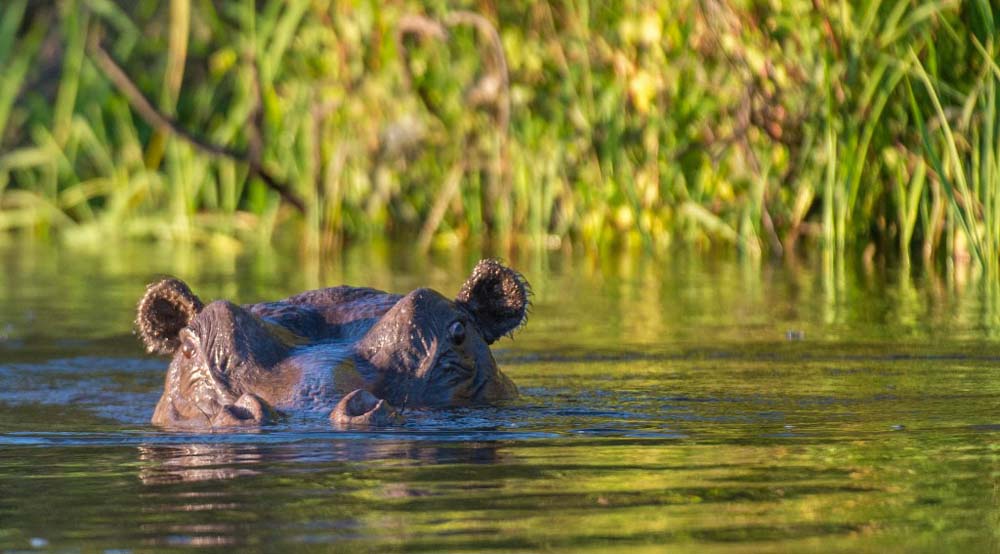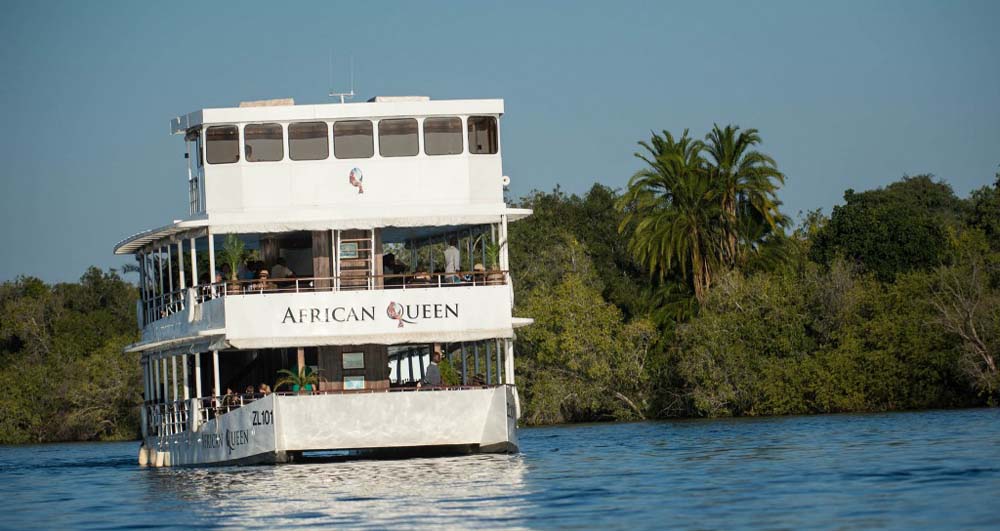Zimbabwe Trip Report April-May 2016

Zimbabwe Trip Report April-May 2016
PART 1: ZIMBABWE, GETTING THERE AND WHY YOU SHOULD VISIT
Living in Houston and spending quite a bit of time in Africa every year is not exactly a hardship and we look forward to and enjoy our regular visits there. Even so, having to cross multiple time zones several times per year makes you think long and hard about getting there and back. We’ve done it every which way: non-stop on South African Airways from JFK to JNB; via Dulles near Washington D.C. with a refueling stop in Dakar or Accra; via Atlanta on Delta non-stop to JNB; via London, via Paris. And via Dubai on Emirates. You can watch 7 movies back to back on a 16-hr flight (did it), almost finish reading Mandela’s autobiography Long Walk to Freedom (done that too) or complete much of your trip report (ditto on that). Or you can simply fritter away the equivalent of two working days sitting idly in a window seat dozing off intermittently, eating mediocre food from tiny boxes and re-watching Pulp Fiction for the umpteenth time. Which is all very well until you realize that inane trivia is starting to stick. Why do I even want to remember that Tony Rockamora – aka Tony ‘Rocky Horror’ – was thrown from the 4th floor of a building for allegedly giving Mia Wallace a foot massage? Really.
This time around I experienced not too bad a flight back to Houston having spent a night in Amsterdam on the way. The plan being to spend half a day there and to break up the long flight back. It definitely seemed like a good idea at the time. The Africa trip ended in Cape Town where I had attended the excellent ‘We Are Africa’ trade show, so it made sense to take the overnight CPT to AMS flight on KLM, leaving Cape Town at around 1100P and getting into Amsterdam at 1000A the next morning. Same time zone, should be a breeze, or so I thought. I had all kinds of things lined up for what would be my first real visit to Amsterdam.
Somehow, I forgot that it is not a good idea to make plans for anything – except maybe a nap – at the end of an 11-hour flight. Duh! So predictably I ended up doing absolutely nothing in Amsterdam: no gawking with other tourists in the red light district, no Rijks Museum, no Anne Frank House, no coffee shops… My travel batteries were totally flat. The bar at the new Airport Hilton hotel had 70 kinds of gin so I tried a couple while waiting another almost 3 hours for my room to become available. I have to admit that that was the extent of my exploration of Dutch culture. What little I saw of Amsterdam – well actually Schiphol – was what I could see along the flat, manicured bike path along the edge of the airport, where I went for an 8K run – after a nap. I will have to return there with Kathy some day in the future for a proper visit.
As for the trip itself, I had one near disaster hit me when I lost all my notes (little black book) on a game drive on the shore of Lake Kariba. But would you believe a guide from another camp found the notebook last week and they are sending it to me by DHL; arriving here today (Tuesday). So the trip report(s) will run a few days late.
In short, the trip was great. I am a big Zimbabwe fan and it certainly lived up to my expectations, again. Northern Hwange (Nehimba and Camp Hwange) was new to me; what stood out was the massive bull elephants which came to the waterhole at Nehimba Camp at night. Amazing to see these fascinating animals so close up at night; veritable ‘great grey ghosts’ and so quiet, unbelievable.
I did get a few nice pics – particularly of some elephants on the Lake Kariba shoreline, the boulders in the Matobos at sunset and Sable Antelope in Hwange. My ‘jumping impala’ shots were not perfect but we are getting there. For the first time I managed to capture several images of these sleek, hugely under-appreciated antelope doing what they do best.
I discovered what the real ‘Mana Pools experience’ is like and saw the actual Mana pools for the first time. Walking there with my guide Henry from Vundu Camp was fantastic. This is what one should do in Mana Pools. See something, get out of the vehicle and approach on foot. Even though the camp itself was not up at the time I could easily see myself spending a couple of nights in a tent at Vundu Point. What a setting! A small group trip including a Ruwesi Canoe Trail is on the horizon.
The best two places this time around were the Matobos (rhino, beautiful scenery & some interesting San rock art) and Matusadona on Lake Kariba. The elephants there are peculiar to the area – a bit smaller than some but with good tusks and very confiding. Matusadona also has plenty of zebra which are a favorite subject of mine, and several large groups of impala which were noticeably jumpy, much to the photographers’ delight. We had one or two good lion sightings on the trip as well – in Hwange. Unfortunately no leopard (the car just behind us saw two in Hwange); cheetah or African Painted Dogs. We missed the Painted Dogs in Mana Pools (Vundu Point) by just a day. Of course this is what happens when a trip is too rushed. That being the idea with an inspection trip. It is ‘go go go’ to see as much as possible in a short amount of time.
As a country Zimbabwe can hardly be more beaten down and it is gasping for breath in what is hopefully the last round of a long, exhausting battle. The people whom I spoke to were almost resigned to the realities of bad leadership, incompetent governance, widespread corruption and bureaucratic impediments inhibiting progress and development. There seemed to be a consensus that things will change for the better when a new government comes into power in a couple of years’ time. Unemployment is exceedingly high, the country is running short on cash reserves and there may even be a food shortage in some parts of the country later this year. Fortunately widespread late rains averted what might have been a disastrous drought.
There is one very bright prospect for Zimbabwe and that is tourism. Zimbabwe has it all: abundant wildlife, friendly people, scenic beauty and good infrastructure. Plus unequivocally the best safari guiding corps of any country in Africa. And soon it will have a new international airport at Victoria Falls which will make it even easier to come here and to bypass Johannesburg if one wanted to. Based on what we have seen and experienced on this trip and previous ones we will continue to urge our clients to spend some or all of their time in the rich slice of Africa called Zimbabwe. Don’t visit Zimbabwe because you want to help its people overcome years of neglect – although that would be admirable. Visit Zimbabwe because it is a great safari destination – one of the best in Africa. A friendly, hospitable place where you will see lots of wildlife in a rugged, wild environment with few other visitors around and at an affordable price, offering exceptionally good value.
PART 2: RHODES MATOPOS NATIONAL PARK
Just before sunset on most days of the year the late afternoon African sun lights up a group of large boulders in a remote corner of Matabeleland in Zimbabwe. It is an awesome sight in the old-fashioned sense of the word. In the near-horizontal golden light the boulders come alive, the vividly illuminated blue-green lichen deposits and ochre-colored iron streaks lighting up the rocks like Chinese lanterns. Even if the place had no history to it, it would be worth visiting.
But of course this haunted, enigmatic spot does have historical import. Discreetly tucked in among the boulders is a simple brass plaque which reads: ‘Here lie the remains of Cecil John Rhodes’. This magical, maybe even mystical place is also known as Malindidzimo which means ‘The Home of the Spirit of My Forefathers’ harking back to the time of the great Ndebele leaders who established the region now known as Matabeleland. In short, the area is of national and international renown. And lately enveloped in a controversy surrounding the legacy of Cecil John Rhodes and people like him: uncomfortable reminders of the non-politically correct world we once lived in.
Cecil John Rhodes, the founder of Rhodesia (now Zimbabwe) is perhaps the world’s archetypal imperialist, long harboring an ambition to create a British exclusionary zone from the Cape to Cairo, a “red line” of British dominions from south to north. In his day a colossus of the British Empire at its zenith around the turn of the century, Rhodes first came across Malindidzimo on horseback in 1896. Rhodes – who specified in his will that he wanted to be buried here – called the area ‘A View of the World’. He might as well have called it ‘The End of the World’ as the views stretch into infinity in every direction. The jumble of giant boulders clustered on top of a massive, sprawling granite dome which drops down and away in every direction is photographically spectacular and its impact is almost visceral. Walking up to the boulders and touching the rough surface is practically guaranteed to put one into a contemplative, introspective mood. Even if you live to be a hundred years, your existence would be but a tiny blip in time measured against the geological transformation which has taken place here over the course of 2,000 million years.
The Rhodes grave site location is powerful and evocative and even the most cynical of Darwinians may experience a jolt of spirituality in this place which is thankfully devoid of all artifice and hype. As Cecil John Rhodes himself remarked at the time – “The peacefulness of it all: the chaotic grandeur of it: it creates a feeling of awe and brings home to one how very small we all are.”
Almost anywhere else in the world, the scene would be difficult to photograph because of the throngs of visitors which would converge on such a singularly striking place. Not in Zimbabwe. Other than myself, my Camp Amalinda guide Kevin and two other guests from the camp, there were just 4 or 5 other people around. I had to work hard to even get one or two children into some of the photographs. It was just the few of us, the boulders and the silent companionship of the dead and departed.
As the sun dropped below the western horizon, everything changed. It was as if someone had literally switched off the beauty and what had been a stupendous sight became rather ho-hum in a matter of 20 seconds. So there you have Rule #1 for visiting the Matobos. Time your visit to Rhodes’ ‘View of the World’ for late afternoon sundowners on a clear or at worst partially cloudy day. It is just about essential to have some good light on the boulders to experience the true drama of the place.
That is also the only rule for visiting the Matobos. Except maybe to schedule an outing to Rhodes Matoppos National Park to see the white rhino on your first day there. Don’t wait until the last day, like I did. We almost entirely missed seeing the rhinos because of a change of weather (cool front) which made them move into more dense brush.
Getting to Bulawayo
My trip to Zimbabwe started with an SA Airlink flight from Jo’burg to Bulawayo. Bulawayo – Zimbabwe’s second largest city – has a relatively new and attractive small airport, somewhat oddly located a long way from town, in the middle of the bush. Don’t let the modern appearance of the airport fool you; the visa and immigration procedures are relics from yesteryear: bureaucratic and slow. One line for the visa payment, another one for immigration and every step replete with handwritten notes, receipts and carbon paper copies. Honestly, when did you last see carbon paper in use?
After a tedious 45 minutes or so, I finally had my Zimbabwe visa pasted into the passport and we headed out to the destination of the day, Camp Amalinda, the best of several properties in the area close to Cecil John Rhodes’ burial place and Rhodes Matoppos National Park.
I was pleased to see that unlike cities like Nairobi, Dar-es-Salaam and Arusha – or even Jo’burg and Cape Town – Bulawayo’s traffic was light. Driving along the wide boulevards was a breeze. Just be sure to stop at the stop signs or red lights because traffic law enforcement is strict. In no time at all we were heading down a gradually narrowing asphalt road, winding its way through some of the prettiest countryside imaginable. As we got closer to Camp Amalinda, the typical stacked and weathered boulder formations associated with the Matobos started to show up left and right. Hill upon hill vies for one’s attention with patches of white syringa trees creating bright yellow bursts of color along the hillsides.
Camp Amalinda
In summer when the trees are in full leaf Camp Amalinda hides itself very well. Much of the camp including all of the accommodation units is practically invisible upon arrival in the car park. Other than a few vehicles in the parking area, there was no sign of rooms or lounges or other structures. This definitely adds to the appeal of the place. Being built into a large granite kopje some of the rooms – and certainly my room #9 – would be a bit of an ordeal to reach for someone with mobility issues. Personally I thought it was part of the fun of being there to scramble up a series of rock steps, discovering the dining area with a large captain’s table, noticing a cozy bar with a huge rock overhang, squeezing past a small library and walking up and around an attractive and as it turned out well-used open fireplace.
On my first afternoon at Camp Amalinda I took a look around the property, enjoyed a delicious light lunch at the pool – with zebras in the background – and went for a late afternoon run. For the next hour I was enveloped in almost complete silence. Other than a few passing vehicles, all I heard was the sound of my footfall, some labored breathing and a few bird calls. The lightly traveled route from Bulawayo meanders around the Matobo hills, and transects some sublimely beautiful countryside. Any run here is a rave run.
Other than the previously described outing to Cecil John Rhodes’ burial site, the two recommended activities from Camp Amalinda are an outing to explore a San cave art site and a game drive/walk, specifically to find and observe White Rhino. There are other activities including a sundowner walk, time permitting.
San Cave Art
Our morning outing to Nswatugi Cave, one of the easily accessible and more famous rock art sites in the Matobos was pleasant, taking us on a drive past Maleme Dam through the recreational area of Rhodes Matoppos National Park. The cave walls are filled with a dazzling array of beautifully done friezes of giraffes, elephants and kudu. The slowly fading yet still brilliant artwork dates back to about 13,000 years ago. It is estimated that the last of the San people departed the area around the year 1500, about 150 years before the first Dutch settlement in what is now Cape Town.
Standing there in a very exposed cave looking at the mural fills one with a sense of wonder and many questions. What is it that compelled the ancient artists to record these intricate drawings for posterity? There could not have been anything easy about it. Paint as we know it was unknown: they had to make their own by mixing blood and animal fat with ground hematite and ochre and other ingredients. And then laboriously apply the sticky mixture to a sheer rock face, sometimes standing on rudimentary scaffolding, judging by the height of some of the artwork. The intimate association between the humans of that time and the natural world around them, particularly the wildlife, becomes abundantly clear. In retrospect I think I will spend more time checking out the San cave art on a future visit to the Matobos. Some of the paintings such as the giraffes are astonishingly good and seemed to have been done by a master artist with an uncanny ability to portray animal shapes and coloration.
On my last morning at Camp Amalinda, I was up at 5:30 to photograph a few rock formations and cliff faces along the road from Amalinda to the Rhodes Matoppos National Park entrance. Photography is all about light. We had driven this same route the previous day and while the stacked and weathered rock formations were impressive, the harsh late morning and mid-day sun obliterated much of the subtlety and nuance of the stone surface. Very early the next day the views were immeasurably better. With the sun occasionally emerging from behind a low bank of clouds, the true colors of the weathered granite could be seen and the contrast with the beautifully lit green surroundings was fantastic. So if you want to get some decent photographs of the Matobo rock formations, be sure to get our there at first light. It is essential.
Finding Rhino
A little later that morning – again too late for wildlife photography – we set off for a different area within Rhodes Matoppos National Park in pursuit of white rhino. Without getting too specific about the location it was – like much of the Matobos – fairly hilly, undulating terrain and quite well wooded in patches. Due to some unexpectedly cool, windy conditions it proved to be challenging to find the rhino despite having advance scouting information. You’d think that these bulky behemoths would be easy to spot anywhere but that is of course not the case. They have an uncanny ability to disappear behind even sparse vegetation and in this thickly wooded terrain we were indeed fortunate to find them. I am sure that the local trackers and guides had been keeping tabs on the whereabouts of the rhinos so it was not all luck…
Once the rhino – a female and older calf – had been located, we got out of the vehicle and approached them on foot. Due to their tendency to keep their heads low to the ground, white rhino don’t always make the best photographic subjects but seeing them close up on foot is nonetheless an exhilarating wildlife viewing experience. Just like on my recent Rhino Walking Safari (link) in Kruger Park I was thrilled to be able to get within 10 meters or so of the rhino and managed a couple of decent exposures. In better light the photographs would have been potentially great; as it turned out they were usable but without much drama. The young rhino was quite animated and kept pricking its ears and lifting its head, while starting in our direction. The older female rhino was totally relaxed and kept feeding nonstop, not feeling threatened in the least.
Conclusion
While it has a somewhat rough-hewn feel to it because of the rocky environment, Camp Amalinda is luxurious and sophisticated to the point where it will satisfy all but the most finicky of persons, I would think. The rooms all have lots of space, an indoor shower and/or bath, flush toilet and plenty of space for your stuff. With a huge, comfortable bed and quality sheets & pillows I had no problems falling & staying asleep. The cooking at Camp Amalinda was surprisingly good– in fact impeccable – and the breakfasts in particular were superb with good coffee, and a well turned-out omelette.
In summary the unique Camp Amalinda is located in one of Zimbabwe’s – make that Southern Africa’s – most scenically beautiful areas and it offers an unbeatable trio of activities namely trekking for rhino on foot, visiting caves with exquisite San rock art and best of all experiencing the grandeur and loneliness of Rhodes’ grave-site at Malindidzimo, one of the most impressive places I have ever visited.
PART 3: HWANGE NATIONAL PARK
To the casual observer or first-time visitor, Nehimba Lodge in north-central Hwange National Park in Zimbabwe seems to have been built in a non-remarkable area. There’s not a view to speak of in any direction, a mountain in the background, no river to be seen or even much in the way of impressive vegetation. Spend a day or two there and you will no longer have to guess why the camp is where it is.
On my first visit there one cool April night, my unasked question about this was answered in the form of several huge bull elephants that came lumbering out of the darkness to quench their thirst at a pumped fresh water source a few meters off the wooden deck. Nehimba is located in this spot because that is where subterranean water was found.
My friend Bob Pattan and I from Houston and two other guests – sisters from Australia – were wide-eyed and animated, shrugging off jet-lag and travel fatigue as we excitedly pointed at the approaching beasts, marveling at their size, their ivory and their simply unbelievable ability to walk around so nimbly and quietly. Like great grey ghosts in the brilliant moonlight, they approached the watering point and either timidly or boldly – depending on their dominance ‘ranking’ – dipped their trunks into the clean pumped water again and again. We watched as they lifted up their trunks and heard the liquid gurgling into their stomachs. Imvelo Safaris’ MD Mark (‘Butch’) Butcher reminded us that there were still many ponds of water out in the woodlands so the elephants did not ‘have’ to come to the camp’s water source. Just like us they may simply prefer clean pure water over the murkier version from a natural water hole. Or perhaps they like the minerality of the pumped artesian water.
On this evening – and the following one – we watched the night-time elephant activity for the better part of two hours, impressed by the seriousness with which they approached the water hole, particularly when there were other elephants present. There were a lot of meaningful stares, loaded glances and the occasional bump or two, but nothing overly serious. It gets a lot more hectic of course later in the year when the competition for dwindling water resources heats up considerably.
In the dry season it becomes all too clear that Hwange is in fact all about reliable sources of underground water. This Switzerland-sized reserve in far western Zimbabwe – on the edge of the Kalahari – does not have any rivers to speak of, except in the far northern area of the park. The erratic summer rains which usually fall from about December through March fill up some of the pans and leave behind scattered ponds and water holes. They don’t last long. In a month or two most of the pools of fresh water are consumed by the animals, drain away or evaporate. From July through October and often stretching well into November and even later, much of the wildlife in Hwange and particularly the elephants depend on pumped water for survival. If it weren’t for the approximately 65 or so artificially maintained water holes scattered throughout the park elephant numbers would likely crash dramatically and Hwange would become far less hospitable a place for wildlife. Not so much over the few wet months of summer but definitely during the long dry season or in years when the summer rains are sparse or fail altogether.
Water has been pumped in Hwange for more than 80 years ever since the first warden Ted Davison drilled the first bore hole in the park in the 1930’s, in an attempt to provide a year-round source of drinking water for the animals. His program has proven to be wildly successful to the point where Hwange now has 30,000-plus elephant seasonally moving into and out of the park. This puts a lot of pressure on the water holes and in the dry hot months of September and especially October, camps like Nehimba and many others experience a non-stop parade of elephants coming to slake their huge thirsts. Which can be stressful for the animals but a boon for visitors who are treated to some of the best close-up views of dozens and sometimes hundreds of elephants, often in large breeding herds with lots of babies, a good indicator of the degree to which the animals are thriving.
Last April we found ourselves in Hwange just a couple of weeks or so after some substantial and widespread rains had fallen. Even though the rain was late by historical patterns, it was welcome and likely averted what may have been a catastrophic drought in much of the park.
It does have an effect on game-viewing though. Over the course of several days at Nehimba and Camp Hwange in mid-April, it became clear that the northern part of the park – which is dominated by mopane trees – is not at its best in the wet season. Several times we found ourselves driving around aimlessly during the early morning and late afternoon ‘golden hour’; the time of day when any serious photographer wants to have his/her lens trained on a perfectly lit subject.
That is not to say that we did not enjoy the time spent at Nehimba and Camp Hwange; in fact we had a marvelous time there. Even so, they are best visited later in the dry season, from about June or July onward, through October and November. At this time of the year the water holes at both camps as well as at the natural seeps which are found in the area, and at pumped water holes such as Shumba, are hives of wildlife activity. Visitors can be assured of viewing and photographing a good number and variety of animals including of course elephant, buffalo, wildebeest, giraffe, zebra, eland and many more. Plus good predator activity including lions and with a bit of luck, African Painted Dogs.
An outstanding feature of a visit to Hwange National Park – it applies to all of the Zimbabwe parks – is being in the presence of or better yet walking with a Zimbabwe professional guide. On average, it takes someone about 5 to 7 years to obtain the qualification which is without doubt the ‘gold standard’ for guiding throughout Africa.
Becoming a Zimbabwe Professional Guide
In an interview with Safaritalk, Zimbabwe Professional Guide Julian Brookstein described the process and requirements for qualifying as a Zim pro guide; what follows is a summary of Julian’s much more detailed description. The process of becoming a Zimbabwe pro guide is complicated and demanding. It starts with a written exam for a learner’s guide license which covers habitats & animal habits, firearms and legal issues among others. With this license and basic first aid training you can guide, but only in a vehicle. You then take up an apprenticeship with a safari company which takes from three to four years but can be up to ten years. During this time, while gaining experience and knowledge, a learner guide also has to hunt at least four dangerous game animals; this is usually done in a situation where a problem animal has to be eradicated. Over this entire apprenticeship period, learner guides have to keep a logbook of everything from camp maintenance work to drives taken, walks in the company of fully licensed guides, approaches to dangerous game – in fact anything and everything to do with guiding.
Once a learner guide is at a stage of proficiency where his/her mentor thinks the person is ready to move forward, he/she has to complete an advanced first aid course, and then a shooting exam which tests the applicant’s speed and accuracy under conditions simulating an animal charging or the pursuit of a wounded elephant or similar.
The last two steps – which are the also the toughest – is an interview for final proficiency and then the actual proficiency test. During the interview for proficiency as many as 10 qualified guides will test your knowledge of mammal skulls & skins and any other matters relating to guiding. Passing this test comes with an invitation to proficiency, which happens once a year in the first week of October. The aspiring guide usually teams up with another apprentice and sets up a full fly camp to host at least two examiners. The camp is expected to be fully functional with food and beverages to be provided (you can take in a camp hand or two to assist). After a camp inspection, the next week is taken up with small groups of apprentices and examiners spending hours out in the bush and the applicants having to answer questions on all aspects of the fauna and flora, tracks etc. Most importantly, guide applicants will be put in a situation where they have to successfully shoot and drop an elephant with a single shot. After all this, a guide will be fully qualified as a Zimbabwe Professional Guide and only then will he/she be allowed to lead guests on foot, in any of the Zimbabwe National Parks.
What does this mean to visitors? It means that you can get out of the vehicle and follow your Zim pro guide on foot with the greatest of confidence. They are trained specifically to be able to protect you under any and all circumstances. The guides try to avoid potential danger but if something unexpected happens, you will know exactly what to do because your guide will have already properly briefed you. It is on foot where Zimbabwe pro guides really shine and are best able to demonstrate their skills and knowledge. So if you find yourself at a safari camp and someone asks if you’d like to do some walking, say yes. It may end up being one of your best ever safari experiences!
Nehimba Lodge
Friendly, hospitable staff and management, casual atmosphere. Huge rooms with comfortable
beds, old-fashioned bath & outdoor showers. It was nice to have an electronic device to alert camp
management when you were ready to be collected from your room. We were guided by one of
the most experienced Zimbabwe pro guides around (the MD of Imvelo Safaris) and experienced a
good close encounter with a bull elephant while on foot. Highlight was undoubtedly the elephants
coming to drink right by the pool & deck at night. Great food including a memorable traditional
meal on the day of arrival, with three types of meat, sadza (local version of polenta), morogo (traditional
spinach), a bean salad and more. Wonderfully remote and peaceful area – highly recommended
for particularly elephant aficionados. WIFI = Yes.
Camp Hwange
Exceedingly well-run camp with superior guiding staff. Everything was spotlessly clean and in perfect working order including the vehicles which had nice special features such as an interior roof light which is useful when arriving back in camp after dark. Highlight was seeing two male lions in perfect light near Shumba Pan on our last morning there. An all-day outing to the Sinamatella area was educational – we saw a part of the park which we had never traveled in previously – but ultimately
disappointing due to very thick bush conditions making animal viewing difficult. All three
guides with whom we interacted namely Julian Brookstein, Spike Williamson and Adam were extremely
knowledgeable, friendly and tried their very best to find animals for us. We enjoyed a couple of memorable meals at Camp Hwange which had the highest occupancy of any of the camps we visited. WIFI = Yes
Somalisa Camp
Currently the most luxurious camp in Hwange, by a significant margin. Absolutely no comparison with the ‘original’ Somalisa Camp; the only thing the two have in common is the location. The new Somalisa has beautiful and expansive common areas and deluxe rooms which are huge, elegant and luxurious in every way, complete with old-fashioned bath and shower. The camp has easy access to Ngweshla which is one of Hwange’s best game-viewing areas, bar none. Always something to be seen; over a couple of visits there we experienced great views of eland, zebra, impala, colorful birds and much more, previously we had also seen roan there. Our afternoon game drive out of Somalisa with our guide Lewis was one of the best of the trip with great views of breeding herds of elephant with lots of tiny babies, among others. Plus delicious meals including a memorable pita lunch with lamb meat balls, a variety of salads and couscous.
WIFI = Yes
Linkwasha Camp
This new Wilderness Safaris property is a sleek, well-designed new camp in the southern part of
Hwange, close to Ngamo Pan. I like the spacious, well-equipped rooms (overhead fan and efficient standing fan), excellent lighting, nice view over a nearby pan, mini-bar and indoor-outdoor shower with great water pressure. The food was superb. This camp delivered the best overall game-viewing of any of the Hwange Camps we visited this time. Ngamo Pans is a jewel of a place for the green season and this camp – or Wilderness Safaris’ Little Makalolo or Davison’s Camp – is a great choice for the summer months.
A worthwhile side-trip was a visit to Ngamo Village where the local Headman Johnson Ncube (aka Mr. Johnson) and his wife Dorothy showed us around the neat little village and their private homestead.
Many game-viewing highlights with our professional guide Bulisane Mathe (‘Buli’) such as a fantastic viewing of a herd of Sable antelope seen in good light inside a simply gorgeous Rosewood forest; a small pride of lions at first light near camp and a spell-binding sequence of events when a few elephants chased away a couple of lions at sunset. Our last morning game drive out of Linkwasha produced the first good viewing of eland on this trip and I captured a couple of good images, one showing the relative size of these giant antelope quite clearly, compared with a diminutive impala. WIFI = No.
Conclusion
In summary, Hwange is one of Southern Africa’s most underrated wildlife sanctuaries. Those of us who know it and who visit it regularly know only too well that Hwange delivers a fantastic African safari experience, time after time. For one thing the abundance of elephants almost guarantees a great safari. Everyone loves elephants and even on a slow day, you’ll see more than just a few. But Hwange isn’t just about elephants. They are the highlight but over the years we’ve had some brilliant sightings of lions, cheetah, buffalo, giraffe, sable antelope, roan, eland and many more – plus fantastic birdlife.
Add to that the best guiding in Africa, top-quality camps, relatively few other visitors at practically any time of the year, a good road network and you have the recipe for an amazing safari experience. Don’t rush it though. Hwange is best experienced slowly so take your time and spend at least three or four nights at one camp and by all means do some walking with a Zimbabwe pro guide. Take some time off from game drives, sit and wait at a water hole and observe and magical things will happen.
A few practical hints:
If you are a serious photographer, take a long lens (300 to 400mm) as off-road driving is sensibly not allowed inside the park. The road network is good and most of the animals are seen at or near waterholes so there is no need to drive right up to them. However occasionally you will need a good long lens to capture some of the smaller mammals and birds away from the vehicle.
Hwange gets very hot in the southern African spring and summer months from about October to March or so, yet it can be bitterly cold with temperatures right down to 32F in winter (June, July & August).So go well prepared depending on the season: layering is essential in winter, as are gloves & proper head-cover. In summer the lightest of lightweight clothing would be appropriate and at any time of the year you will need a good hat and plenty of sunscreen.
Hwange combines well and easily with several other Zimbabwe parks & areas.You can start a Zimbabwe trip in the Matobos (rhino, Rhodes’ grave-site at the View of the World & San cave art) & then go by road transfer (about 3.5 hrs) to Hwange. Hwange is also a drivable distance from Victoria Falls (5 to 6 hours depending on what you see along the way inside the park) but better to fly. For a longer Zimbabwe trip consider combining Hwange with Matusadona National Park (scenery, Lake Kariba boating & fishing, excellent elephant-viewing) and Mana Pools (remote, atmospheric, good game-viewing, very diverse range of activities).
PART 4: MATUSADONA NATIONAL PARK
Matusadona National Park which lies between the Ume River and Sanyati Gorge along the shore of Zimbabwe’s massive Lake Kariba is not one of the country’s most-visited reserves, at least not by international tourists. It should be. It is unquestionably beautiful with almost too many visual elements competing for attention. A golf course-like expanse of yellow-green panicum grass along the lake-shore. Acres of thick jesse and mopane bush just behind that. The shimmering surface of Lake Kariba itself. And of course the jagged Matuzviadonha mountains which dominate the skyline. Put it together, add wildlife such as elephants or buffalo in the foreground and you have a natural masterpiece which is gorgeously lit usually twice a day, every day, at sunrise and sunset.
Doing nothing at a safari camp in Matusadona is ok. If all you want to do is sit in a comfortable lounger and take in the view and enjoy the balmy climate, nobody will mind. They might offer you a cup of french-pressed coffee or a gin & tonic, depending on whether it is early or late. If your camp of choice is any good, there will be a sparkling pool likely just meters away, for a quick splash if it gets a little too warm for your liking. And at night – if you are lucky – a lake breeze will agitate the surface of Lake Kariba, creating the best white noise of all, the sound of waves crashing on the shore.
Most people come to Lake Kariba and to Matusadona expecting to do stuff. They won’t be disappointed. Almost as many things as you can see, you can do. Being on the edge of the lake clearly boating is the most obvious of these and taking a boat cruise on the lake is a pleasant and relaxing activity. It is often planned for the late afternoon to best enjoy the views of the sun setting over the water. All you have to do is watch, drink in hand. With snacks on the side.
One step up from that would be to mix in some fishing for either bream or the elusive but highly sought-after Tiger Fish, Africa’s top freshwater fighting fish. A Tiger weighing in at 10 pounds and up is a trophy fish – something to talk about. But of course this is catch and release, no animals harmed in the process. Mostly it’s the person with the fishing rod in hand which gets his or her pride dented as Tigerfish will get rid of a spoon or an artificial fly almost 8 times out of 10. If a Tiger doesn’t strip or break the line, it will jump clear of the water surface while shaking its head violently, in the process usually dislodging whatever it had bitten down on.
For the keen photographers, a couple of game drives along the Matusadona lake shore will deliver some of the best elephant photography they may ever experience. Matusadona has lots of elephants and they show themselves off to their best effect when feeding on the nutritious panicum grass along the lake in the late afternoons. This is your opportunity for that once in a lifetime ‘screen saver’ shot with a perfectly lit herd of elephants in front of a multi-layered, colorful background including grass, lake, mountain and sky. It does not get any better or easier than this.
The Matusadona elephants are totally relaxed and will feed right around a stationary vehicle; even females with very small babies show absolutely no fear or signs or agitation. You won’t need a very long lens as they will get very close! The Matusadona elephants are on average slightly smaller in stature than most other African elephants but many of them have long, elegant tusks. Their hides are a deep golden brown color, caused by their close association with the Lake Kariba mud. Other than elephants you may be pointing your lens at zebra, impala (capture them jumping!), buffalo, a variety of colorful birds including several large birds of prey, bee-eaters and kingfishers.
On my third visit to the area over the last 10 years, the three things that are essential to any good safari magically happened. I found the right camp, went at a good time of the year and was fortunate to have a superb guide. I had returned to the area for a third time to check out a new property – Changa – and to see if we could finally start to include Lake Kariba in more of our clients’ Zimbabwe trips. Our two previous visits to the area were enjoyable but not compelling to the point where I wanted to tell the whole world to go there. This time around, the overall experience was fantastic and yes – Matusadona should be high on everybody’s list of places to see and things to do in Zimbabwe.
Changa Safari Camp is a relatively small (10-room) tented property close to Fothergill Island, right on the edge of Lake Kariba and with post-card views in every direction and from every room. Flying in from Hwange we landed at nearby Fothergill Island airstrip and it was a brief 15 to maybe 20-minute drive from there to the camp. When Lake Kariba has more water the trip may be done by boat which would make it even more special.
The rooms at Changa are comfortable but not overly luxurious; my standard room had a king size bed with 2 overhead fans, adequate but not exceptionally good lighting, plenty of shelf space to unpack clothing and other stuff. A bonus: an outdoor bath and a terrific front verandah with a hammock. On the minus side, the towels can do with an upgrade.
On my first afternoon at Changa I joined three other guests and our very competent guide on a pontoon boat outing on Lake Kariba. With the lake being as low as it was at the time – about 33% of full capacity – there were stark black ‘tree skeletons’ all along the edges of the lake, lending a slightly eerie edge to what would otherwise be a fairly innocuous outing. Seeing the massive dead Lead-wood tree stumps sticking several meters out of the water, prominently edged against the blue sky, inevitably makes one think about doing a similar boat trip when the lake is full. I will never be able to go flat-out in a motorboat on Lake Kariba in future, without remembering those sharp dead tree limbs reaching up from below. As it turned out the only excitement of the trip was what we could generate mentally as the fishing itself was a bust with just a few ‘rubbish fish’ (Squeakers) being landed. It’s not always like that; fishing is unpredictable and all you have to do is try again. Plus it gets better later in the year when it becomes warmer, from September onward.
The following morning I was up early at 5:45A for a 2-hour foot safari. From camp, I drove out about 15 minutes or so with Bruce Cronje, a Zimbabwe professional guide. Bruce is an impressive young man, seemingly always totally in control, and clearly fearless. I felt very confident walking with him, even in terrain where unpredictable animals such as solitary buffalo bulls may be encountered. It ended up being a pleasant walk mostly through mopane scrub, through a couple of dry creek beds and eventually out onto the open floodplain, currently very extensive due to the low level of Lake Kariba. From a distance, we saw some elephants emerging from the edge of the tree-line, and a bit later found ourselves very much in their midst, by this time back in the vehicle. I was particularly impressed by a hefty elephant bull with massive tusks, seemingly fixated on one of the females and doggedly following her around. The rest of the breeding herd peacefully passed around us, barely taking notice of the two of us in the open vehicle. It was an exhilarating experience.
Later that day we were alerted to the fact that a pride of lion was present in the Changa Camp area. The Matusadona Lion Research Project monitors the movement of collared lions in the area and passes on the information on an informal basis to the Changa guides. This does not mean that the lions are just out there to be seen. Far from it – as we soon discovered. Upon hearing the news of the lions being around, a few of us grabbed our cameras and binoculars and jumped into a vehicle with Bruce. Even getting close to the GPS coordinates of the spot where the lions had last been recorded, proved to be a mission. Had I been driving, we would not have made it one quarter of the way there. The track was barely passable and in fact we did get momentarily stuck but was able to free the vehicle with a bit of effort.
Having reached a spot where we could drive no further, we got out of the car and the three of us followed Bruce on foot, in search of lions. Walking into lions is high on my personal bucket list, having tried to do so several times previously, without success. I was hoping mightily that this outing would end differently. Just knowing that lions are actually around or had been recorded in an area recently, adds a lot of excitement and even some apprehension to walking in dense bush. Your every sense is in hyper-mode; your breathing rate and heartbeat are elevated and your adrenaline is starting to pump in anticipation of what might happen, good or bad. Just like earlier that day I was more relaxed that I probably should have been, simply because we had a ZimbabweProfessional Guide leading us. Ultimately the outing failed because the lions had already moved out of the area, even before we got there. This became clear later in the day when we picked up their tracks somewhere else. It would have been great to find the lions but I can’t say that I was disappointed. Just being there in a situation where a pride of lions might be right around the next bush, was enough. For an hour or so I thought about nothing else but coming face to face with a lion – or more than one – in a situation where I would be decidedly vulnerable. I would have had to face a potentially dangerous animal in its own habitat, on foot. Control my fear, refrain from giving in to instinct and running away. Listen to and follow the instructions of the guide. It was good practice for the next time when the lions might actually be there.
Our late afternoon game drive along the tree-line and eventually out onto the floodplain or lake shore, was one my best in several years. The light was fantastic and the backdrop was beautifully layered, creating a canvas so good that the framing became almost irrelevant. This is where you close the aperture in your lens to f8 or smaller and try to impart as much of the depth of the scene as you can. Of course no matter your level of photographic skills no photo or video can recreate the scene or come close to the impact of being there. One after another, several small breeding herds of elephants slowly made their way from the lake towards the treeline, crossing this huge open expanse of grass, with the water and the mountains behind them. They were not walking purposefully as elephants often do. They were feeding on the panicum grass, lingering here and there, the prehensile tips of their trunks seeking out a bite-size tuft of grass, dislodging it with a twisting and plucking motion, raising it up to their mouths and repeat.
Meanwhile a very young elephant calf was prominent in the herd, clearly reveling in the experience of being out there in this land of plenty. The baby was being visibly pampered by other members of the group who would put their trunks lightly on it, pay obvious attention to it, and subtly but clearly protect it from threats seen and unseen.
For serious photographers, I would put Matusadona high on the list of Zimbabwean areas to visit. Even on a relatively short stay you will be practically assured of getting some of your best ever elephant photographs. The only other African destination where elephants can be photographed as effectively and strikingly as at Matusadona is Amboseli, in Kenya. The elephant experience alone makes it worthwhile traveling to Matusadona National Park and I will definitely recommend it for inclusion in any longer Zimbabweitinerary. Ideally of course one should include Hwange, Victoria Falls, Matusadona (Lake Kariba) and Mana Pools.
Matusadona is also a ‘must visit’ park for birders. The park has an extraordinarily diverse range of habitats which of course attract and sustain a wide variety of birds. At Matusadona you’ll see lots of birds around and over the lake such as African Fish Eagles, various kingfishers, terns, ducks and wading birds, plus of course the species which favor the grasslands (plovers, coursers, pipits, lapwings, guinea-fowl etc.) and the huge variety of birds which favor the thick bush and wooded areas including several birds of prey.
In summary, Matusadona National Park is a much under-rated national park with a unique (for Zimbabwe) mix of grassy lake-front, bush and mountains and an above-average range of activities including boating, fishing, game drives, excellent walking & hiking opportunities, superior bird-watching and a near-perfect setting for photography, particularly of elephants. Having visited several different properties in the Matusadona area over the last several years Changa Camp delivered the best overall experience by far. In terms of location and guiding – the two most important factors predicting the success of a safari – it is definitely tops. Add to that comfortable rooms, delicious food and great all-round hospitality and friendliness and you have a winner!
PART 5: MANA POOLS
Take a poll of Southern African safari aficionados, asking about remote, authentic and memorable safari experiences and the two words ‘Mana Pools’ are sure to feature in the results. If keen wildlife enthusiasts had not been to Mana Pools already, they want to go. If they’ve been before, they want to return. It is that kind of a place. Intriguing and fascinating – the Africa of adventure books and fire-side tales. Lots of animals, not so many people, equal measures of excitement, fun and exploration all taking place along the banks of the Zambezi in one of Africa’s most atmospheric valleys.
Mana Pools is a Zimbabwean National Park and World Heritage Site in the Zambezi River Valley, opposite Zambia’s Lower Zambezi region. On this – my second – visit to the area, I found out what the ‘real’ Mana Pools experience was all about. For one thing, it is actually seeing and visiting one or more of the four natural pools (relic oxbow lagoons) referenced in the name of the park. The Mana Pools experience also includes walking. Simply driving through the park in a safari vehicle won’t cut it: you really should get out and walk. While you can do it on your own legally (due to a quirky park ordinance) we wouldn’t advise it. You’re likely to get lost or worse. Always walk with a Zimbabwe professional guide or an experienced learner guide. You’ll see more, experience more and return home safely.
Over the course of four days I checked out two different properties in the area – Vundu and Kanga – having previously visited Ruckomechi which is located on the western edge of Mana Pools.
VUNDU CAMP
Vundu Camp and its sister property Little Vundu – a seasonal tented camp erected on one of the best spots in all of Mana Pools -are unabashedly ‘plain and simple’ with no pretensions of luxury. Don’t go here if you absolutely want hot water 24/7 or if you equate being on safari with being pampered around the clock. Vundu is all about the Mana Pools experience: it is right on the edge of the Zambezi in one of the park’s best game-viewing areas and if you spend a few days here any time between (approximately) July through October, you will find out what Mana Pools is all about and why people who know it, like it so much.
On this visit I flew into Dandawa airstrip where I was picked up by my Vundu guide Henry – a Zimbabwe Professional Guide. Henry knows the area exceedingly well and I greatly benefited from his knowledge about Mana Pools and every facet of its natural history.
On the drive of about an hour and a half to camp, we were initially in very dense forest and thicket, only occasionally emerging into patches of floodplain adjacent to drainage lines. As we got closer to the Zambezi River, we entered the typical Mana Pools habitat which is open woodland, dominated by massive acacia albida trees, lending the area its distinctive ‘gallery’ look. Over the course of several days in the area it becomes clear that what you see around you is part of an ongoing process, kicked off many thousands of years ago when the precursor of the Zambezi scoured away massive swathes of the Zambezi Valley. Large scale erosion followed by alluvial deposits created a series of massive natural terraces descending down to the river itself.
Mana Pools is particularly well known for its large herds of elephant and buffalo, while eland, zebra, waterbuck, several antelope species and their predators including lions and African Painted Dogs are seen regularly. The Zambezi River itself holds good numbers of hippo and Nile crocodile. The birdlife is abundant with more than 400 species having been recorded.
I very much enjoyed the hospitality and friendliness of the staff and management at Vundu Camp even though the rooms are rustic. The shower ‘floor’ was a bed of round rocks which I did not care for at all, but of course other visitors may like this ‘outdoorsy’ feel. The lighting was fair and the space ample.
The elevated central area is terrific; the ideal spot for a relaxing pre-dinner drink, watching the majestic Zambezi go by. Power boat traffic is prohibited along the Mana Pools side of the Zambezi. So while an occasional motor boat does come charging by on the Zambia side of the river every now and then, the area is by all standards quiet and peaceful.
The food at Vundu Camp is good and tasty (not gourmet, no pretensions) and the managing couple Alex and Marie is young & energetic. The main reason to go there is for the true Mana Pools experience as the camp is perfectly placed inside Mana Pools National Park. In the company of an expert professional guide like Henry, this is a place to experience close-up encounters with big game and to also spend some time on the Zambezi itself. While I did not have an opportunity to do it on this trip, canoeing on the Zambezi is an adventurous and exciting pursuit, given the presence of many hippo and some huge Nile crocodiles. For this activity you definitely want an experienced local guide either in the canoe with you or close by. Canoeing as an activity can be done from and back to camp while a 3-night canoe safari – the Ruwesi Canoe Trail – is also available. This is ideally combined with a few days at Vundu Camp itself.
The seasonal Little Vundu Camp may be an even better bet; I spent a couple of hours at the site and it is spectacular. Although it was not the best time of the year for Tiger fishing, I promptly hooked and released two good-sized Tigers, casting from a small bluff on the river’s edge.
KANGA CAMP
From Vundu, it is an interesting drive through mostly thick forest to Kanga Camp, a small luxury tented camp which nestles up to a large natural water hole. As safari camps go, Kanga is in the ‘sweet spot’ between luxury and functionality. It has everything you need and more in the large, well-appointed safari tents, right down to a massive outdoor bath. Even so it has regular walkways to the main area which keeps one ‘connected’ to the environment and the zippered tent ‘door’ lends an air of authenticity.
Kanga is really all about location, being on the edge of a pan which – in the dry season – attracts a large variety of animals and birds. Clearly the camp is highly seasonal and I would not recommend visiting it much earlier than July or even August. By late April this year the area was exceedingly dense, having received substantial rainfall. Under such circumstances the thick bush makes it practically impossible to find and see the wildlife, with the exception of elephants which wander into some of the more open drainage lines. Several elephants did come to the camp waterhole while I was there, and the birdlife was diverse and abundant.
Later in the season the Kanga Pan becomes a hive of activity as it attracts a growing number of mammals and birds and that is when you want to be there. Kanga lends itself perfectly to the pursuit of an ‘arm-chair’ safari. Resting up comfortably in a cushioned chair on a raised deck looking out over the edge of the pan, participants wait for the action to come to them. Anything can and does show up at the water hole including of course dozens of elephants, buffalo and a multitude of antelope. As the camp photo album vividly illustrates lions, leopard and even African painted dogs also visit the Kanga Pan, sometimes with unexpected results such as when a kudu took refuge in the camp pool, trying to escape a predator.
Even though the game was scarce on my visit to Kanga it did not matter a great deal. Over the course of a couple of nights there I was fortunate to be in the company of an English couple (yes Brexit did come up and we all got it wrong), a trio of South African visitors including a set of identical twin brothers and a couple from Germany on their first safari. As so often happens on safari, the eight of us became instant friends exchanging stories about family, jobs, other trips, previous safaris and camps we had been to on our current itineraries. We enjoyed the relaxed, away-from-it-all setting, the delicious food – the cooking at Kanga was exceptionally good – and the fine South African wines and other beverages.
A last word about Kanga: it is a delightful but highly seasonal property so best visited from about July through October, and also best combined with a few days at a camp on the Zambezi such as its sister property Zambezi Expeditions, or one of the Ruckomechi camps.
MANA POOLS GOING FORWARD
The stable of Mana Pools properties is steadily expanding with Wilderness Safaris opening a second small camp in the area in July 2016 – the 4-roomed Little Ruckomechi – having just recently totally rebuilt their flagship property here, Ruckomechi Camp. I have fond memories of visiting the previous iteration of the camp in early Nov. 2013. Here is a link to the (trip report). At that time the game-viewing in the area was superb and I recall vividly seeing the razor-like browse line on the underside of the beautiful mahogany trees, exactly at the level which can be reached by an adult eland antelope raising its massive head to its highest point. We also enjoyed some great lion sightings and a boat safari on the Zambezi.
Another well-known Southern and East African safari operator – Great Plains – has announced its intention of erecting a camp on the western boundary of the park, along the Zambezi. There is also a new safari camp already in business close to the Chitake Springs area. While nobody wants to see a huge increase in traffic in and around Mana Pools there is ample space for growth and all this is good news for the wildlife of the area, notably the elephants. The presence of tourists, camps, guides, vehicles on game drives and people out on foot safaris – plus a vigorous and well-funded anti-poaching campaign – are all essentials elements in reducing the impact of poaching. Unfortunately the illegal killing of elephants for their ivory is a growing threat in Mana Pools given the abundance of elephants in the area. This activity reaches a high point each year during the wet season when the human habitation of the area reaches a minimum. Poachers thrive under conditions where there is essentially nobody else around. A growing and stable tourism industry in Mana Pools will draw more visitors and will create more jobs, helping to prevent poverty which is often a driving force for poaching or other illegal activity.
Want to do something to help the elephants of Mana Pools? Go and see them for yourself. It is a magical area where the sense of remoteness is palpable and where adventure and even adrenaline-pumping action is as close as the nearest canoe, or as easy to find as going on a walk. It is also a place where you can find a quiet spot, sit down and look across the Zambezi to the striking Zambian escarpment to the north. With very little to disturb the eye except perhaps a few elephants moving across the floodplain adjacent to the river, it is as calming and tranquil a place as you might ever get to. Pure Africa.
PART 6: TOKA LEYA, ZAMBIA & VICTORIA FALLS HOTEL, ZIMBABWE
Victoria Falls is what you make of it. Spend three days in the area and you may walk away with vivid memories and great photos of a stunningly beautiful set of waterfalls, splendid rainbows and rain forests. Experience peaceful river cruises or heart-racing adventures and enjoy genteel hotels, excellent waterfront lodges and some of Africa’s most iconic views.
Stay at the wrong place, eat at an over-rated and over-priced ethnic restaurant or worse yet find yourself in a casino, and you might leave thinking that Vic Falls is a tacky theme park. Expensive, crowded and noisy with helicopters and other aircraft practically drowning out the sound of the falls themselves.
Of course the ‘real’ Victoria Falls is somewhere in-between. On my most recent visit last April, the purpose was to get a quick refresher on one of my all-time favorite hotels, the Victoria Falls Hotel, and to spend a couple of nights on the Zambia side of the Zambezi at Wilderness Safaris’ Toka Leya Lodge. I had not been to the Zambia side of the Victoria Falls in several years.
This time around – as opposed to my last visit to Vic Falls – the Zambezi was in flood stage and the Falls themselves were simply amazing to see. Some of the close-up views of the masses of water flowing over the Eastern cataract were mesmerizing. With as much as 600 million liters of water crashing over and down the giant basalt cliff into First Gorge every minute, the sound is almost as impressive as the view.
The views are easy to remember but hard to describe: multiple rainbows against the sky, foam shooting into the air, never-ending spray squalls coming down over the rain forest, and of course the constant rush of a meters-high wall of water curving down and then hurtling over the abyss, frothing into a sheet of white fury. It is not even remotely possible to capture the overwhelming sensory effect in a photograph or in words. What I can say is that it is definitely worthwhile to time a visit to Vic Falls to be there in late April or early May – and to visit both sides of the Falls. Wear grippy shoes which you won’t mind getting wet, have something to protect your electronic gear from the moisture and then get ready for the experience of a lifetime.
For the first time ever I walked out onto the small bridge on the edge of the Falls on the Zambia side of the Zambezi. Fittingly called Knife-edge bridge, this is about as close as you can come to the Falls and the views are stupendous. Only when the water in the Zambezi is high though. In the late winter and spring months from September through November there is often very little water to be seen from this vantage point. On this day in early May it was exhilarating with the spray intermittently obscuring the views while the super-slippery edges of the metal walking surface turned the experience into an obstacle course of sorts. There is no danger of falling off the bridge – it is very secure. Even so the feeling of being suspended high over the roiling waters below while gingerly making your way towards the end of the bridge can be intimidating.
On the other side of Knife-edge bridge there is a spot from which the main bridge between Zimbabwe and Zambia can be clearly seen and photographed. Together with the view of the bridge from the Vic Falls Hotel this has to be one of the most awesome spectacles in Zimbabwe. There it is right in front of you. About as iconic an image as exists in Southern Africa. Looking for all the world as if it has always been there, spanning the chasm between two countries, a relic of the British Empire and in its day a civil engineering masterpiece.
Viewing the Falls from the Zimbabwe side when the Zambezi is in flood stage is likewise an amazing experience but unless you are well protected with a solid raincoat and water-proof hat, you are going to get wet. In early May this year the furthest I could walk – with a ‘non-waterproof’ camera – was lookout point #5. Beyond that – right across from the main Falls and further to the eastern edge of the falls – it was pretty much a sheet of water coming down all the time. Under these circumstances it is better to do what you can on foot; get as close to the main falls as you can for some good photographs and then go up in a chopper the next morning for some views from the air.
On this trip I made the walk from the Vic Falls Hotel direct to the entrance of the Falls; it takes less than 10 minutes at a moderately brisk pace. One of the guards at the entrance of the hotel gate would be happy to accompany you. This is a good idea as there are often elephants wandering around in the area – driving across from the Zambia side earlier that day I had seen a small herd right across the road from the entrance to the Falls. Once inside the National Park, it is a short walk to the first viewpoint at the Devil’s Cataract, and from there you can make your way along the edge of the Falls, getting a few pics at each point along the way. Or simply admire the view. There are often Bushbuck, a few overly habituated baboons and many species of birds to be seen around the rain forest as well.
TOKA LEYA, ZAMBIA
Having only once before made a brief site inspection at Toka Leya, I was looking forward to spending a couple of nights here on the edge of the Zambezi, only a few kilometers upstream from the Falls themselves.
I was not disappointed. The two days at Toka Leya turned out to be two of the most enjoyable days of the trip. Right from the word go I was impressed with the high level of personal attention I received, including being joined for dinner by the General Manager both nights. In talking to other guests I soon found out that they were experiencing the same superior hospitality.
I did not spend a lot of time in my room at Toka Leya (too busy!) but it was nice and spacious with a comfortable king size bed and effective mosquito net, excellent lighting, effective air-conditioning, indoor shower and a large outdoor tub which was pre-filled with hot water both nights.
The food at Toka Leya was of an exceptionally high standard with multiple choices available for breakfast and dinner. Likewise the afternoon high tea offerings were delicious and creative. There was one slip-up with a delayed dinner order but it was soon rectified. All-round my expectations were more than exceeded.
I’ve always considered Toka Leya to be a 2-night destination and this trip underscored it again. There is too much to see and do to spend just one night. Even with one full day (2 nights) at one’s disposal, you can barely squeeze in 3 or 4 activities such as a visit to the Falls, a sundowner boat cruise, a village visit, a fishing outing, a guided walk or one of the many adventure activities available in Vic Falls, such as bungee jumping, helicopter rides, or whitewater rafting.
I was keen to find and photograph some birds in flight so I signed up for two Zambezi River excursions with my Toka Leya guide. There were lots of birds around but not many in flight, unfortunately Even so I captured a few good images of bee-eaters nesting in the banks of the Zambezi. We also tried fishing for bream for a while, without much luck but the guide did hook a nice specimen.
With the Zambezi being at near flood stage, the sundowner outing was fairly uneventful, with few animals or wildlife seen due to the high water pushing right up to the treeline. We did spot a few crocodiles and of course there were hippos everywhere. What was more interesting was seeing the many other river-craft, boats and skiffs out on the water, enjoying the balmy climate and watching the sun set over the Zambezi.
Undoubtedly the overall highlight was the outing to the Vic Falls on the Zambia side, as mentioned previously. The photographs can’t do the experience justice, but they do show the massive volume of water crashing over the precipice.
For a couple of days or so before a Botswana or Zambia safari, Toka Leya is the ideal place to rest up after the long trans-atlantic journey, see the Victoria Falls, participate in some adventure activities, enjoy the local culture and get your ‘Africa legs’ before venturing into the bush. Alternatively, it is a great spot to unwind for a couple of days after spending a week or two in the bush, and transition back to civilization, in a manner of speaking.
VICTORIA FALLS HOTEL
I’ve written about the Victoria Falls Hotel before at length – here. Since then most of the rooms have been refurbished, starting with the deluxe stable rooms which are still our favorite ones. Quiet and secluded and some with nice views over the gardens.
Of course when I visit the Vic Falls Hotel I am not in search of new and cutting edge. While it is great to have fast broadband in my room the hotel is all about the setting, the atmosphere and being transported back to a different era. Earlier, less complicated times when oceans were crossed by boats and there were still parts of the world wholly undiscovered. When people like Cecil John Rhodes had grandiose visions of a Cape to Cairo route, commercial aviation was in its infancy and the great mammals of Africa still ranged over nearly the entire continent, south of the Sahara.
As if it has slipped into a time gap, the Victoria Falls Hotel remains evocative of those bygone times, of an Africa filled with discovery, danger and romance. Sit somewhere quietly early one morning for a few minutes, perhaps on a bench looking out over the Batoka Gorge in the direction of the Victoria Falls bridge and you will find it easy to imagine stepping back more than a century ago. Just like the iconic view in front of you, the Vic Falls Hotel is timeless and graceful. Spend a couple of days there and you will discover a very special place where time really does stand still. If a guest from 1916 were to return today, he or she might be startled by the sight of a helicopter hovering over the Falls, but not by much else.
Something else that hasn’t grown old or stale at the Vic Falls Hotel is its reputation for quality and service. I’ve been going back there every couple of years or so lately and if anything, the experience has been improving steadily. Most noticeably the various restaurant offerings have been updated and the standard of the cooking is now as high as it might ever have been, in my opinion. I have not had the opportunity to dine at the Livingstone Room lately but several meals on the Stanley Terrace have been surprisingly good – as was breakfast at the Jungle Junction, recently. Simply an astonishing variety of items from as lavish a buffet as you can imagine, plus of course eggs just the way you want them, in addition to several other a la carte items. Don’t be shy.
On my most recent visit I ended up in a deluxe stable room which as I had noted, is our preferred choice for the Vic Falls Hotel. It was quiet and private, cool and comfortable. Plenty of space to roam around if you wanted to, good lighting, shelves and closets for all of one’s stuff and a good-sized bathroom with an enormous bathtub and enough water pressure to fill it promptly. I thought the in-room mini-bar was rather sparsely stocked (only water and beer?) but then again, the Vic Falls Hotel has better options for a drink than one’s room. Take a walk to the Stanley Terrace and sip on something cold there, with one eye over the garden and the view, and the other on the passing parade of humanity. Young couples on honeymoon, older couples trying to emulate them, Europeans, Americans, a smattering of South Africans – languages and accents from every corner of the world. Think Rick’s Cafe ‘Africaine’.
There are very few Southern Africa travel experiences which rival a couple of days at the Vic Falls Hotel, for sheer entertainment value. And it doesn’t have to be only when the Zambezi is in rip-roaring full flow with millions of liters of water crashing over the Falls. Even when the Falls are at their lowest point in November or early December, the views of the main falls are still impressive from the Zimbabwe side; you can do a leisurely sundowner cruise, walk along the edge of the rain forest, take in a bit of curio shopping at the Elephant Walk, jump off the Vic Falls Bridge on a bungee cord if you really want to, or take to the skies in a ‘chopper for the best photographs imaginable.
Whatever it is that you choose to do, make some time in your busy schedule to spend in the garden of the hotel. Sit very still and a few members of the huge colony of Banded Mongoose which lives in one of the interior courtyards will relax around you, watching you warily as they escort some of their youngsters to and from a crack in the pavement. Wait for the sun to set and the lights to come on in front of the property, as the darkness closes in. When it gets quiet and the flying has stopped, is the best time of the day at the Victoria Falls Hotel. Other than the occasional squawks of a few birds settling down for the night, there is nothing to disturb the serenity of an early evening in this timeless place. You won’t need to remind yourself that you are in Africa. You will know it instinctively and remember it forever.


